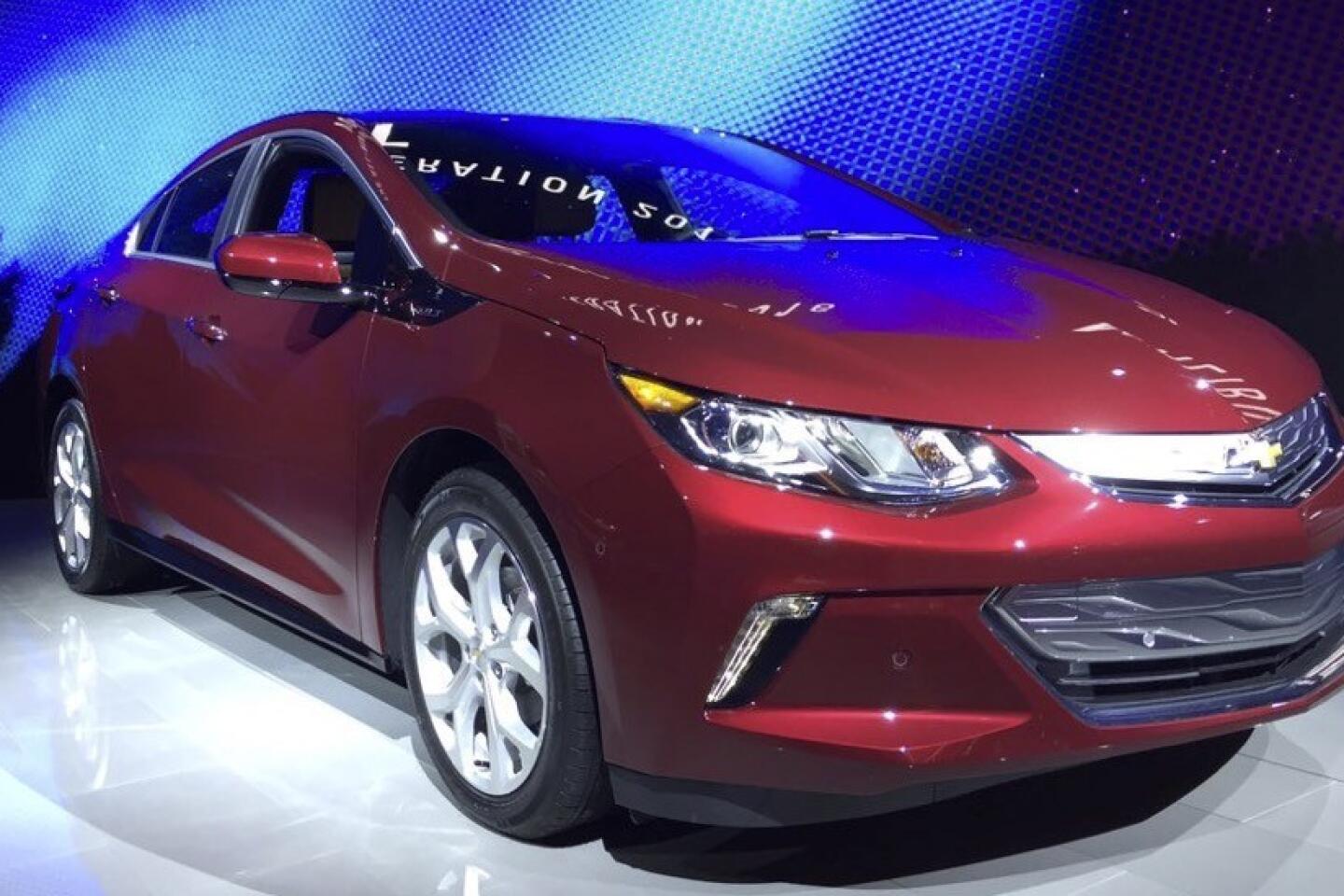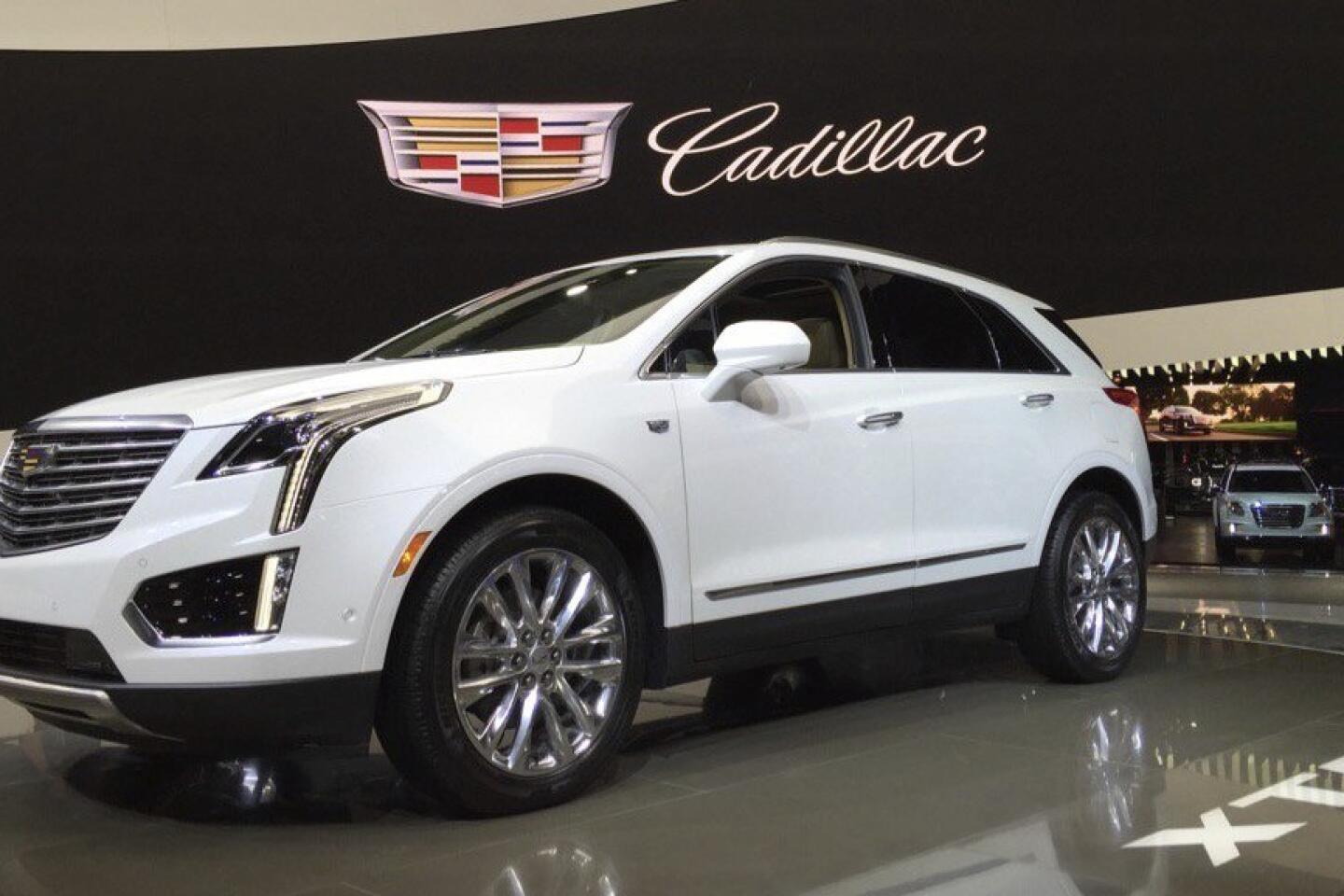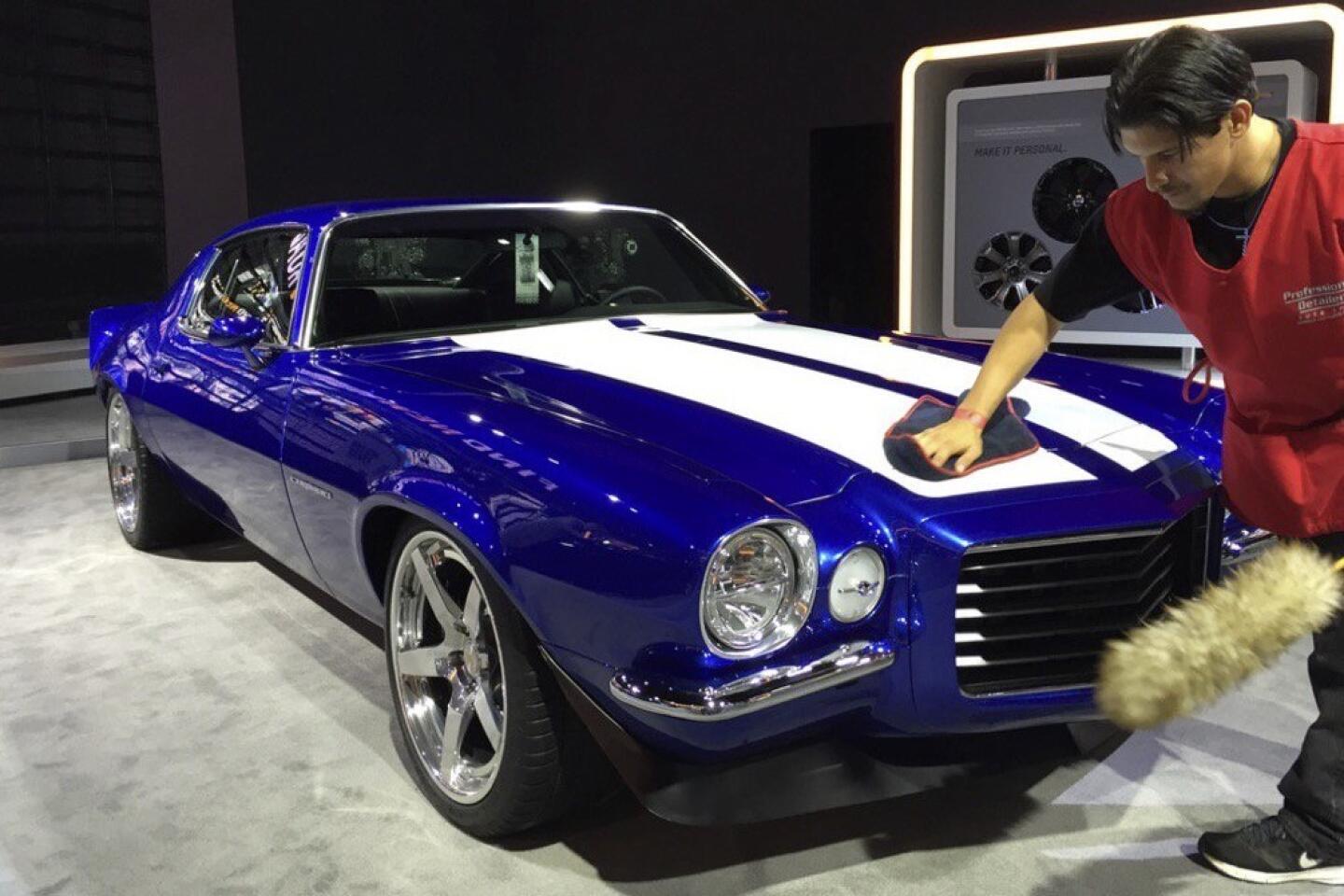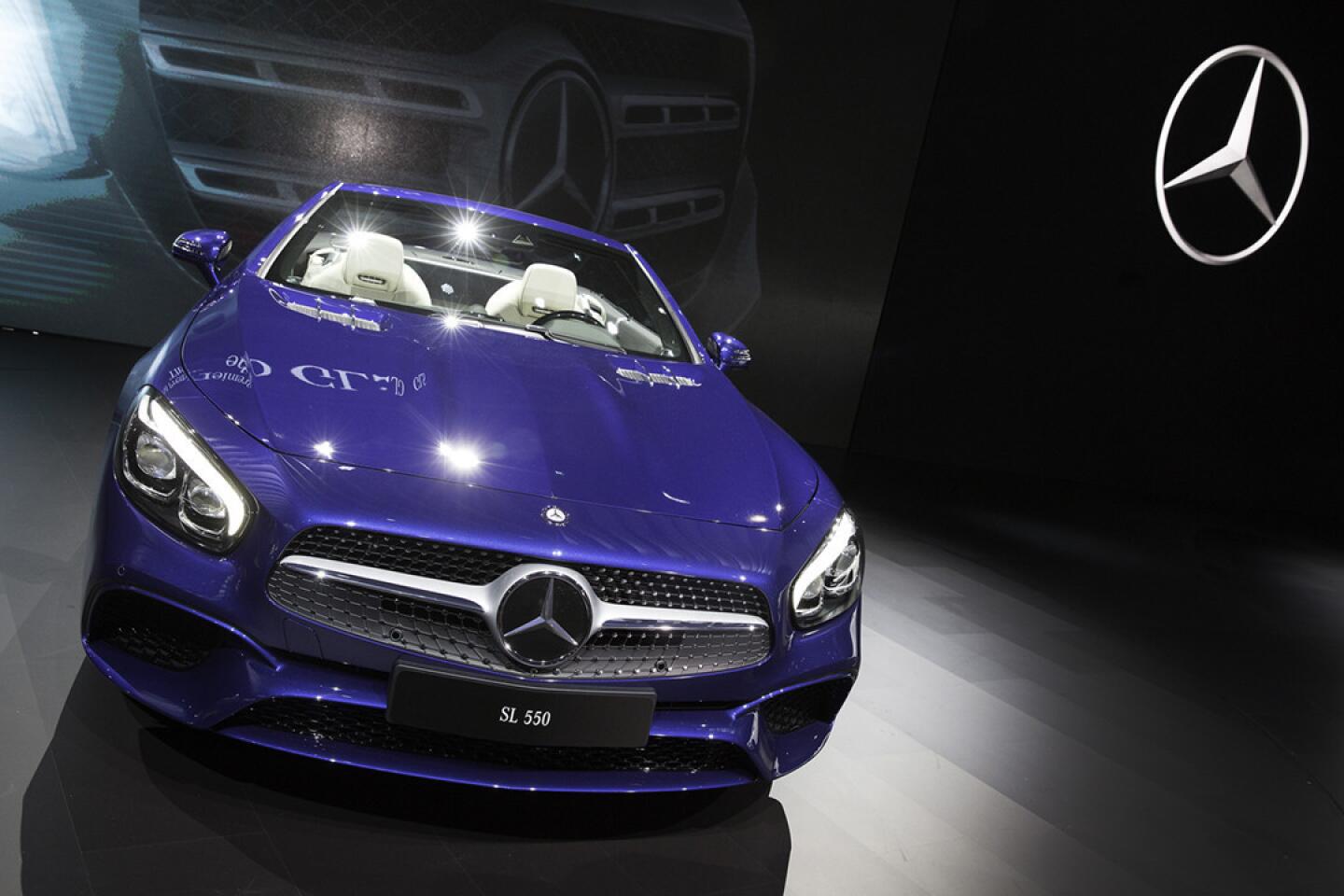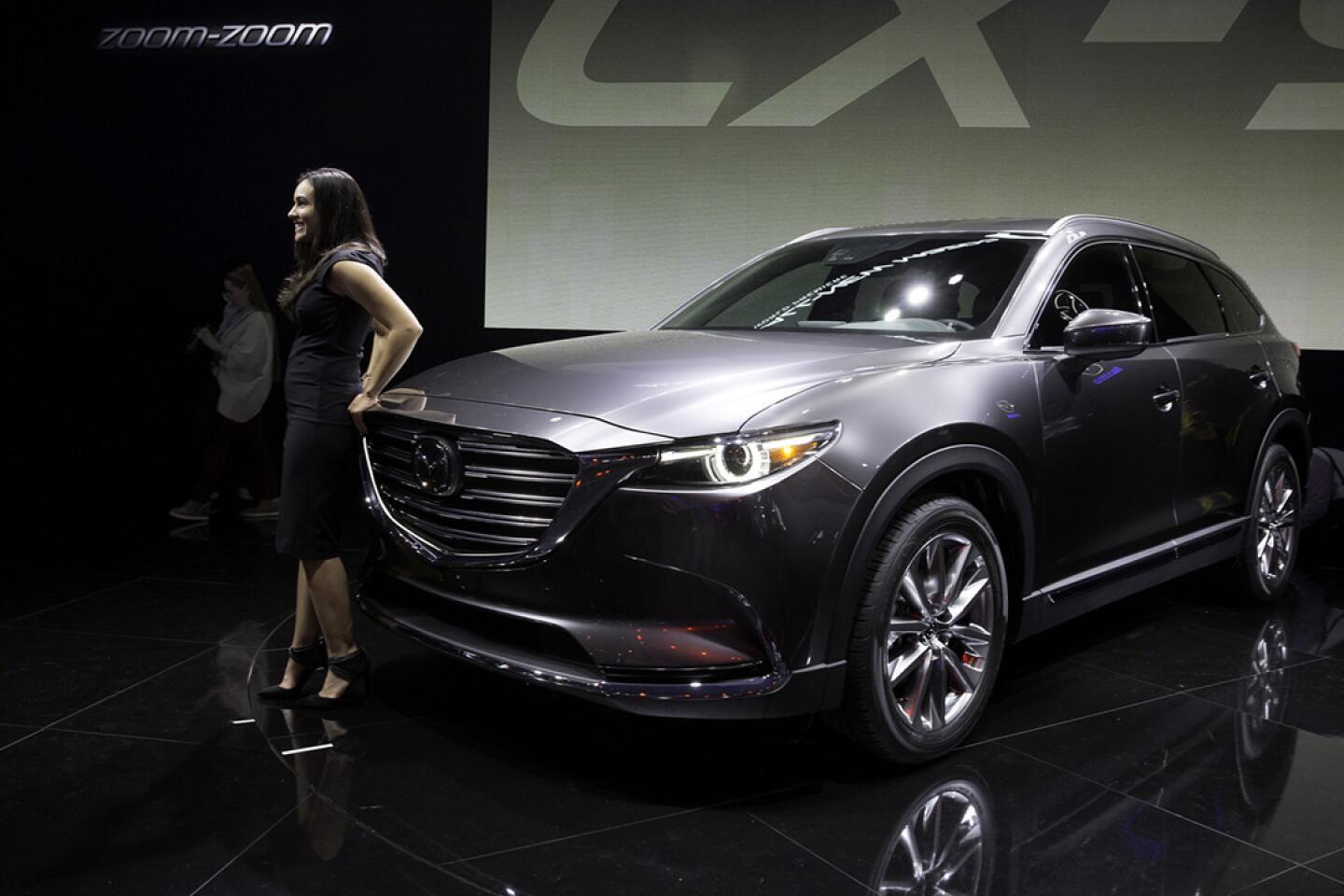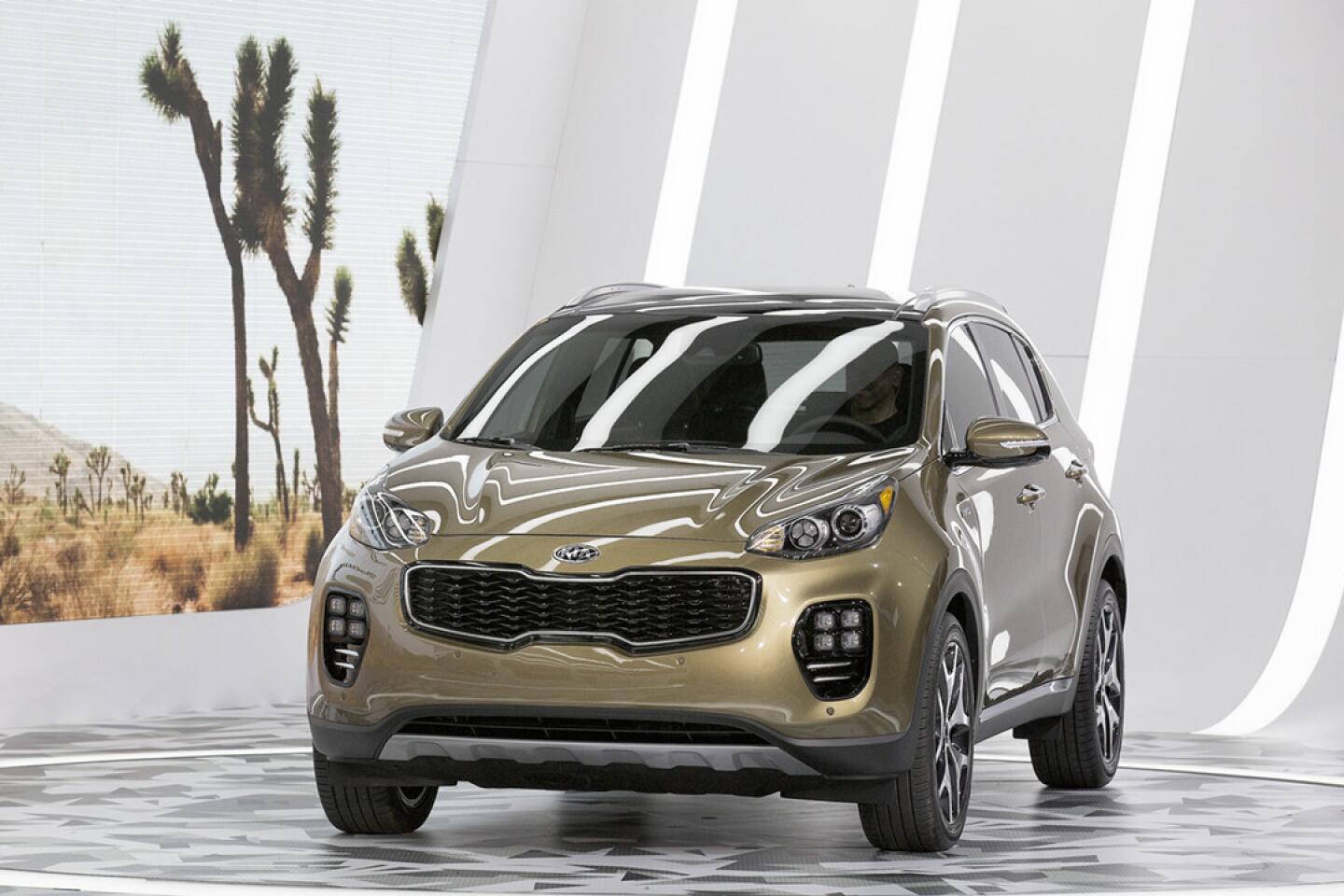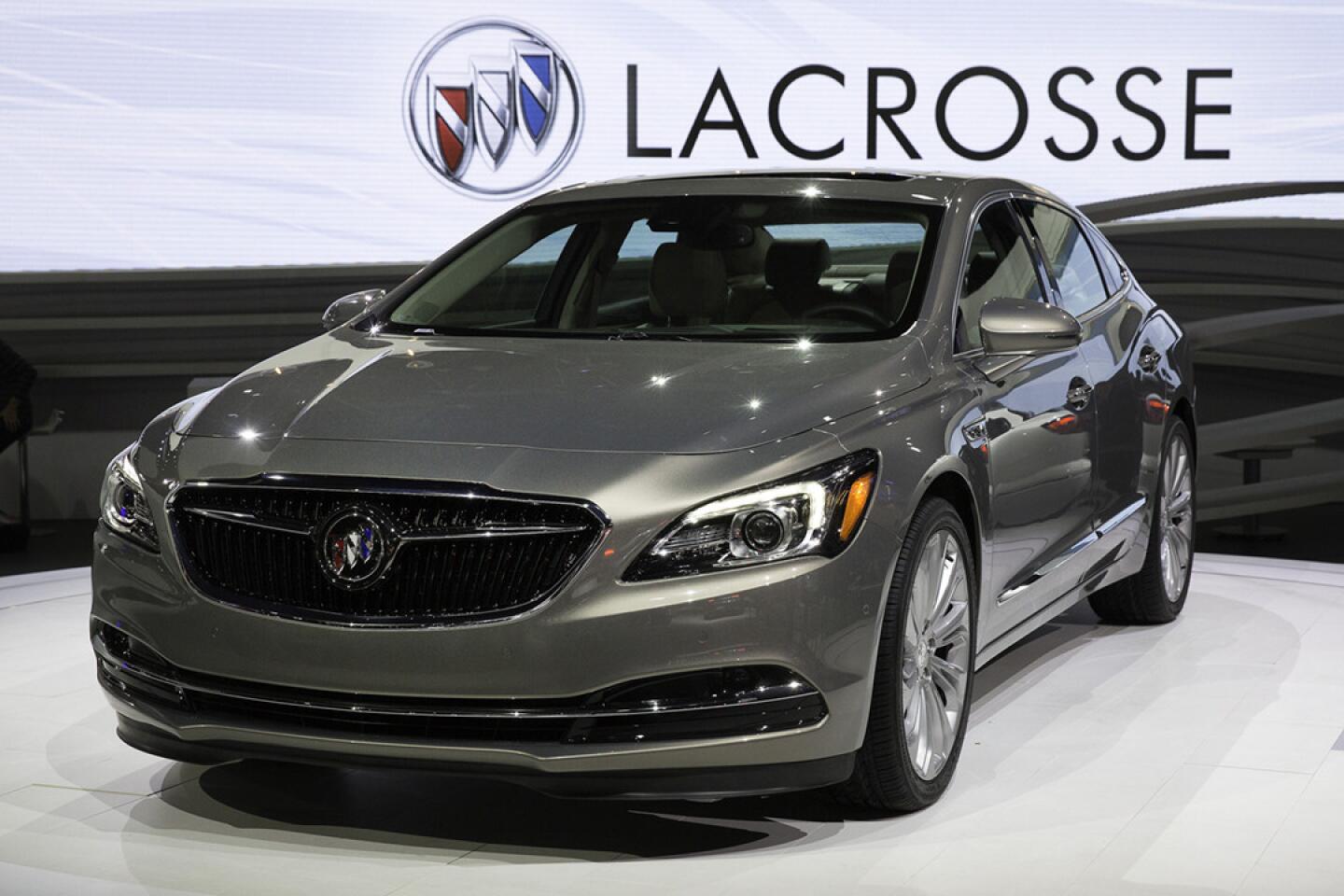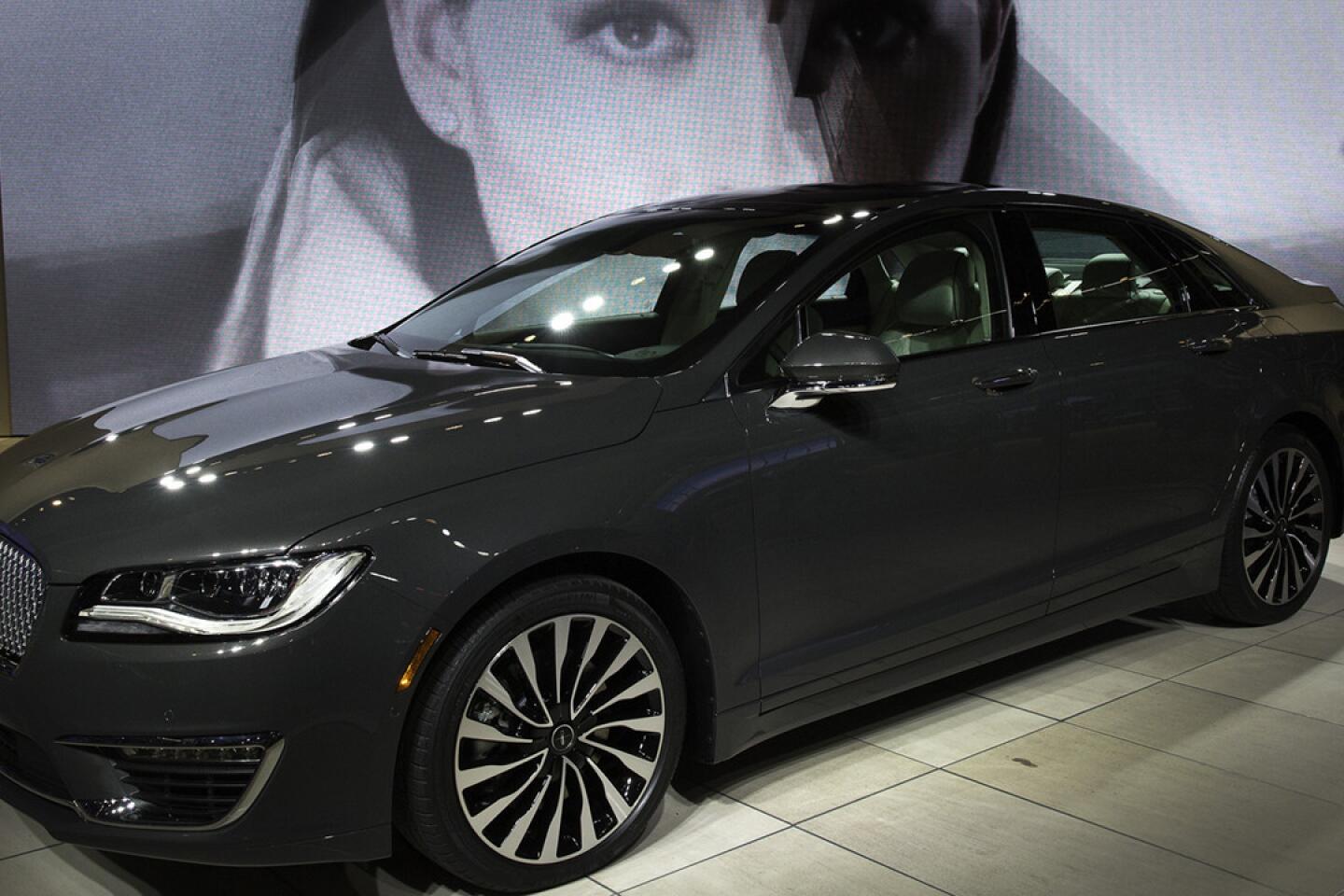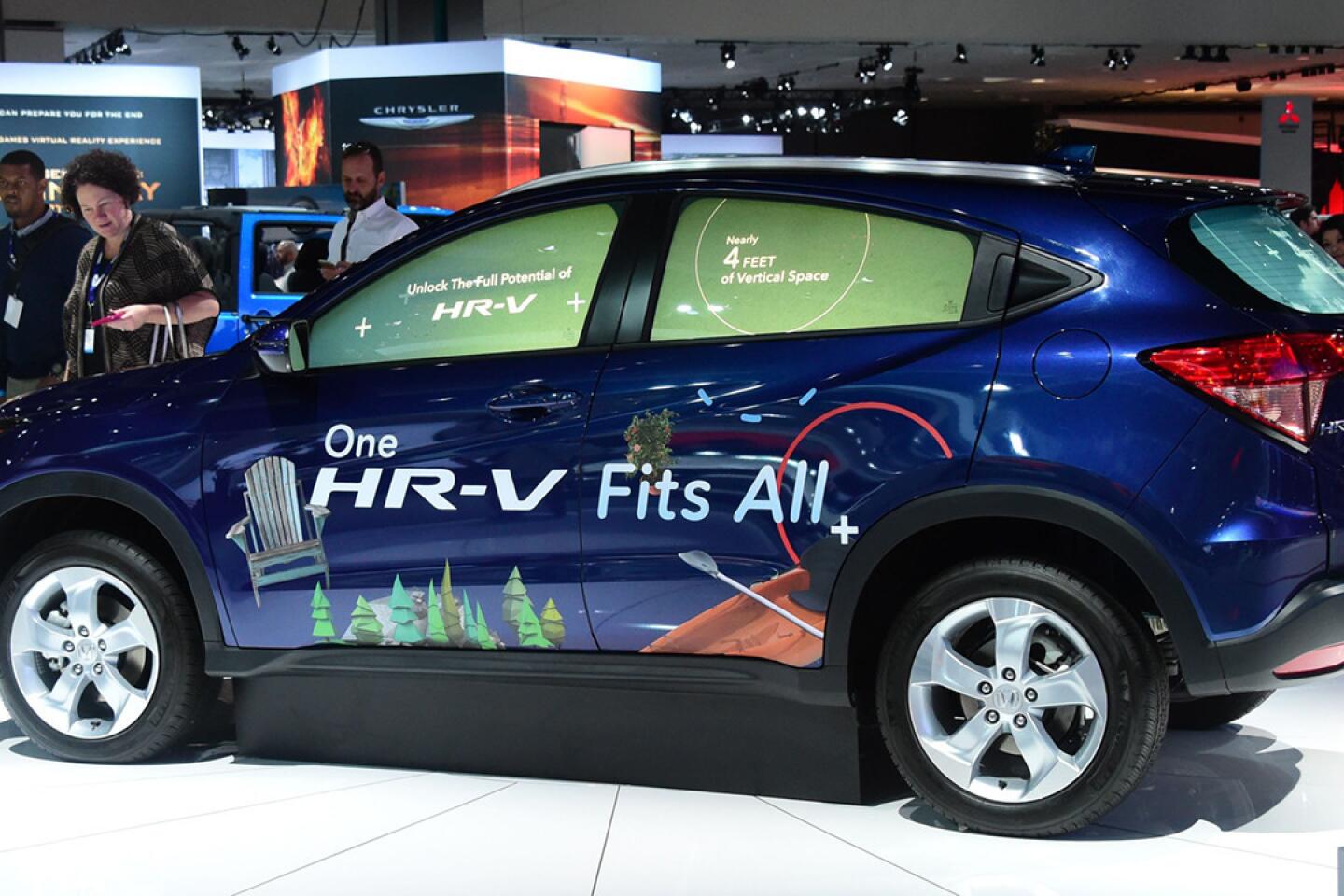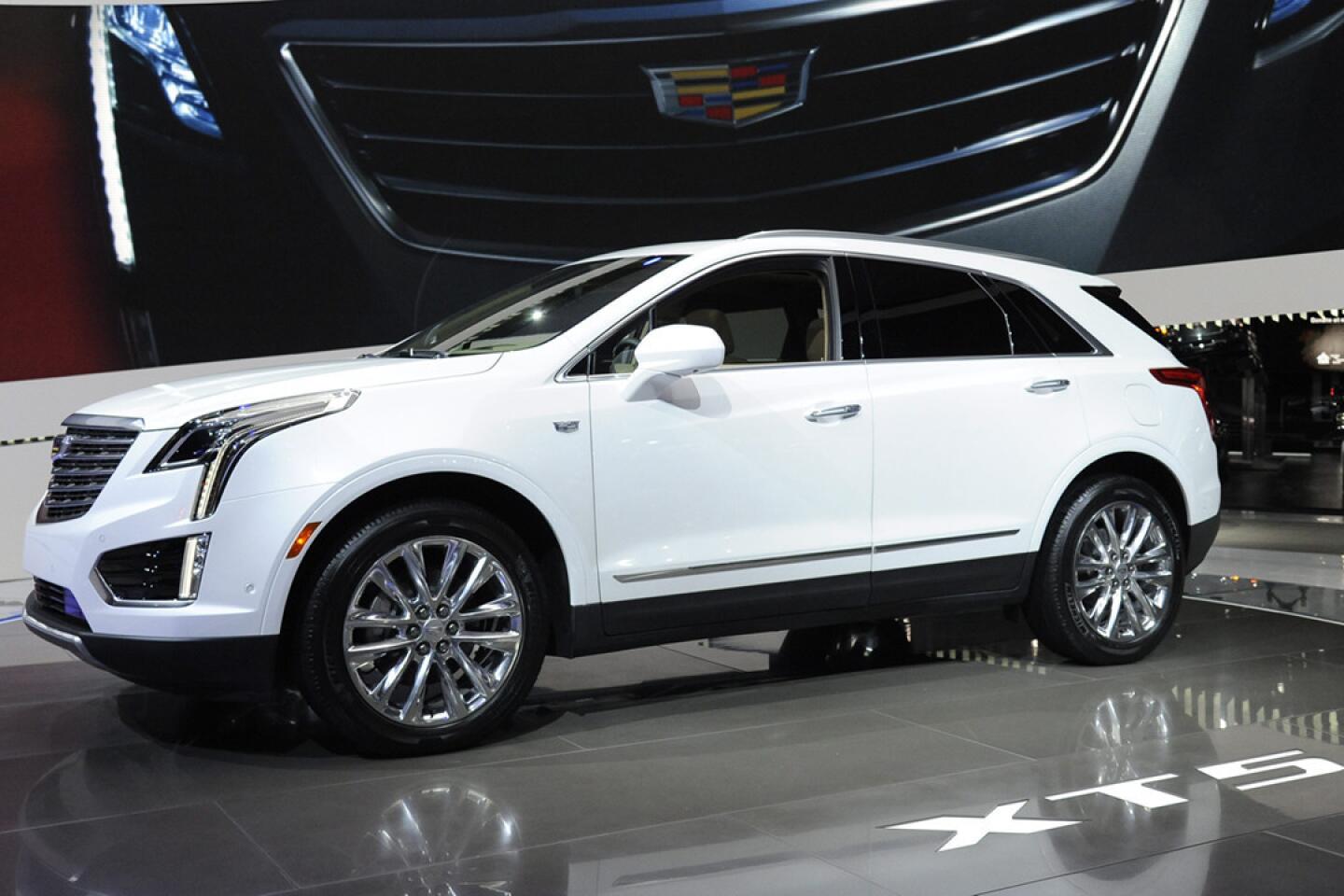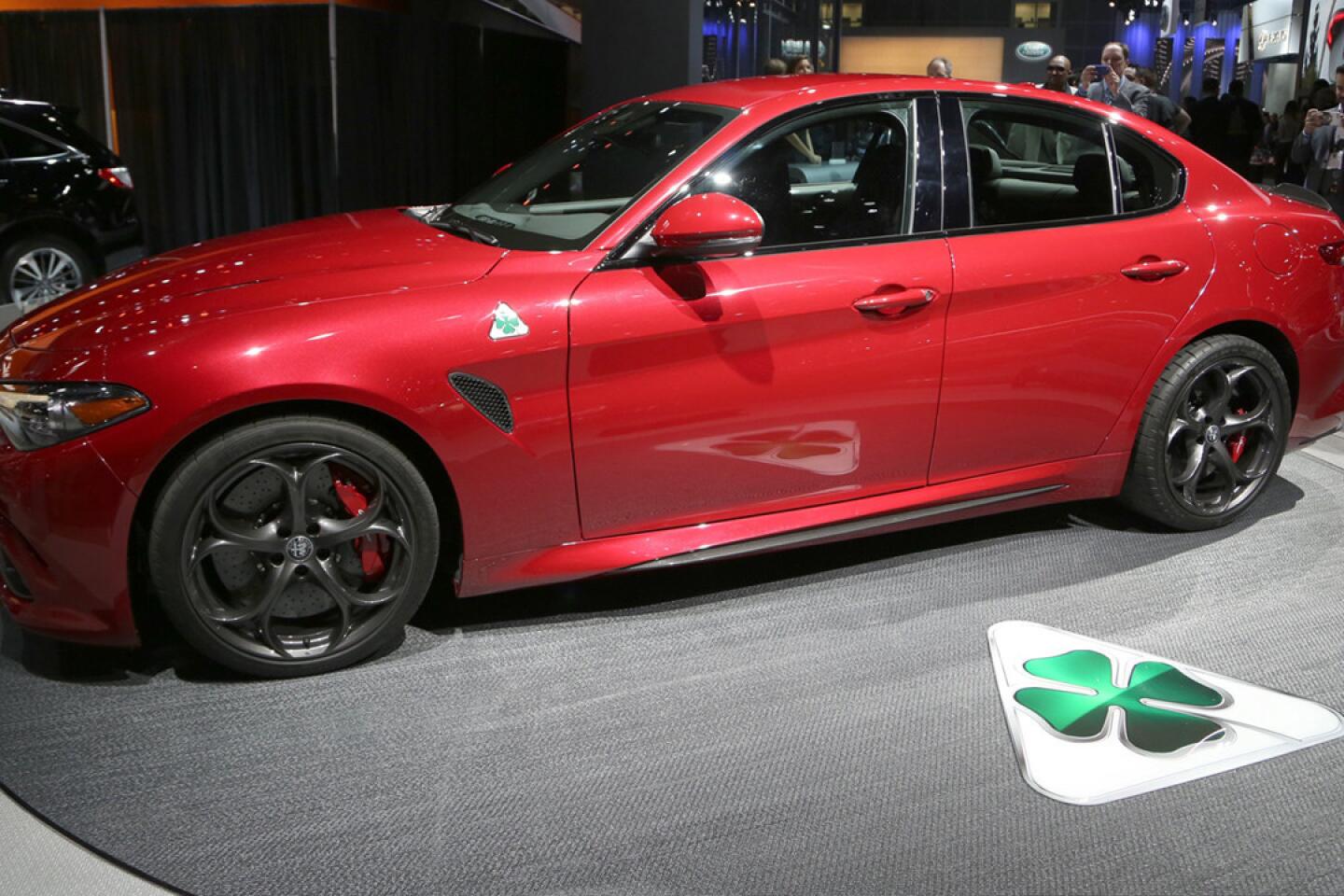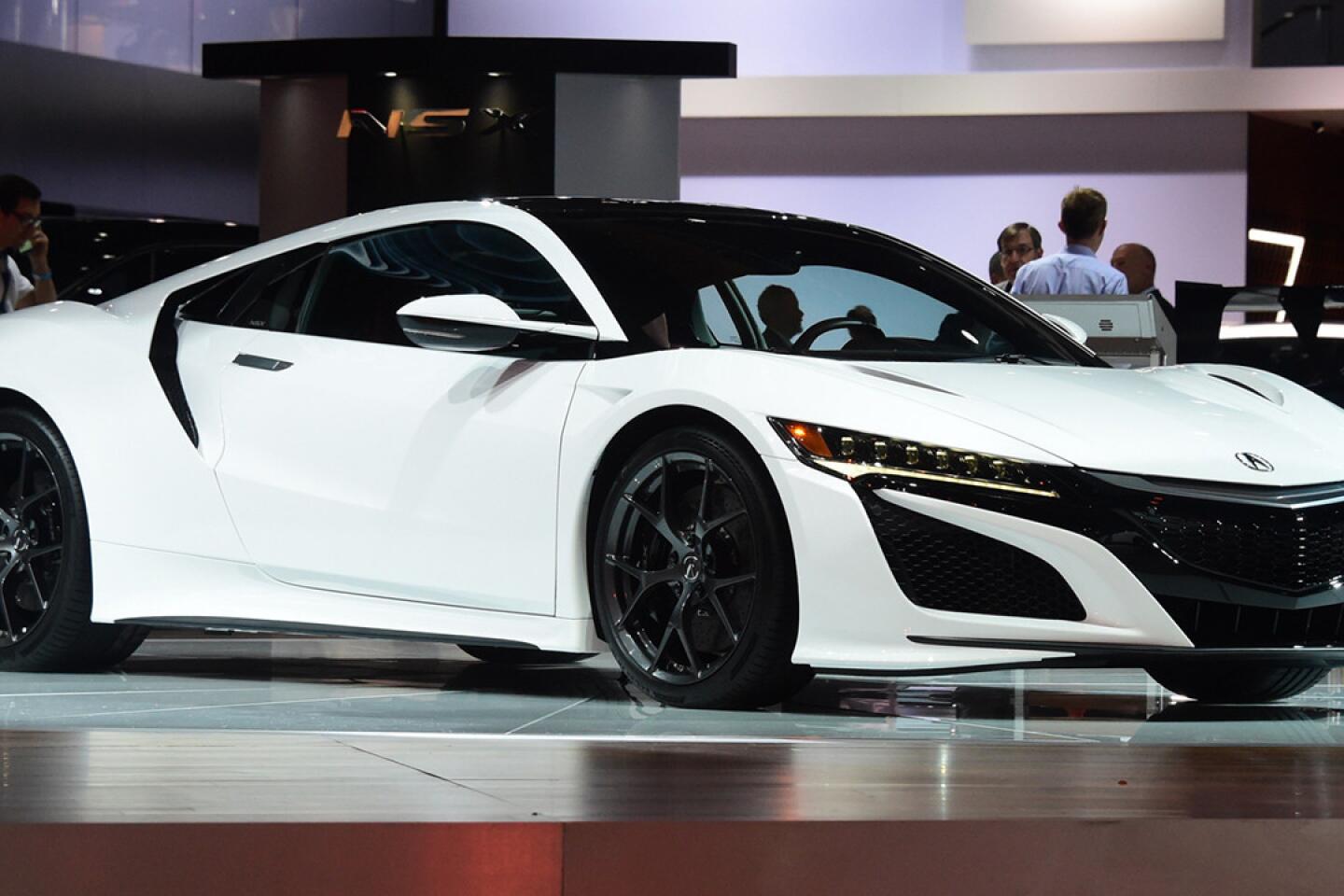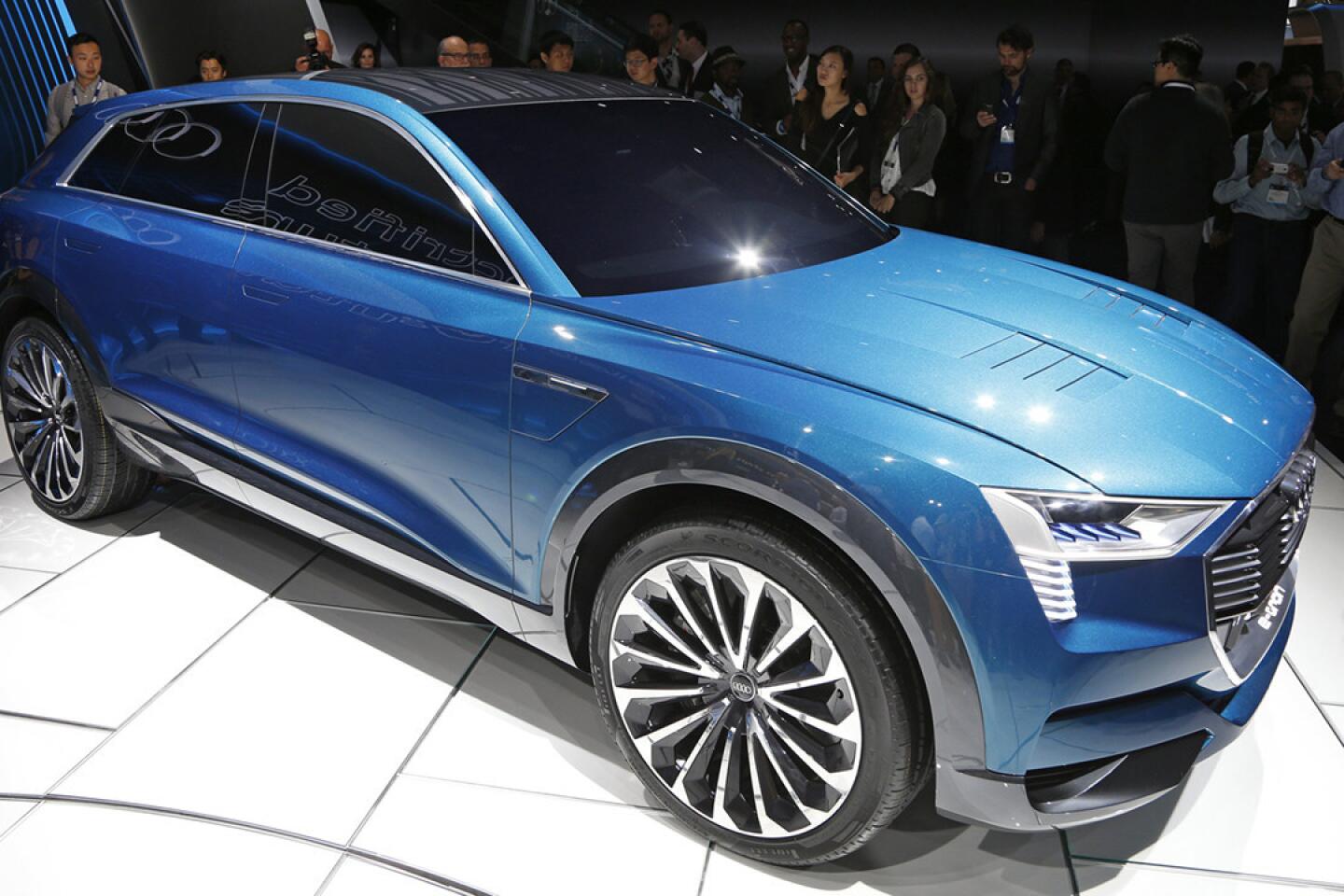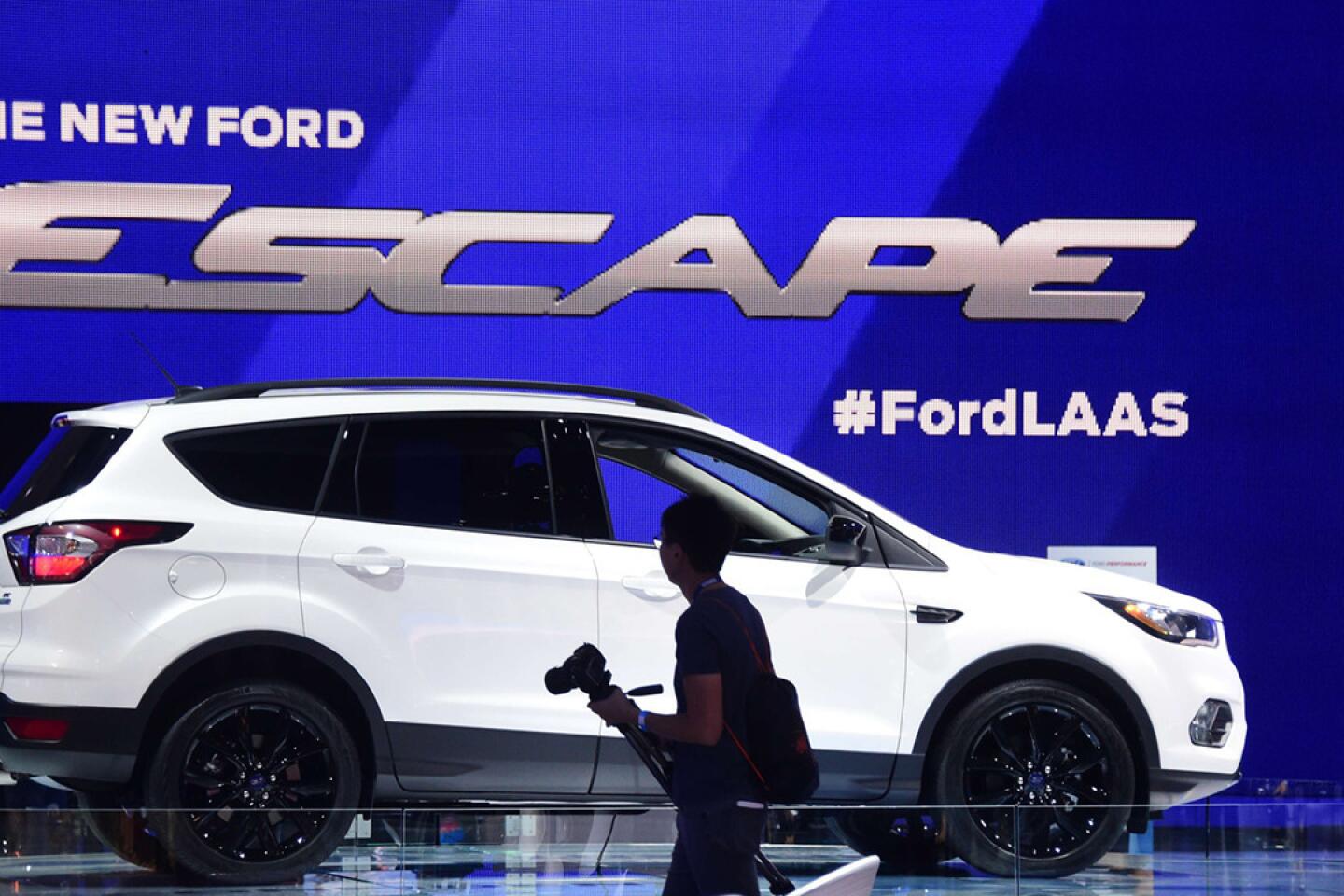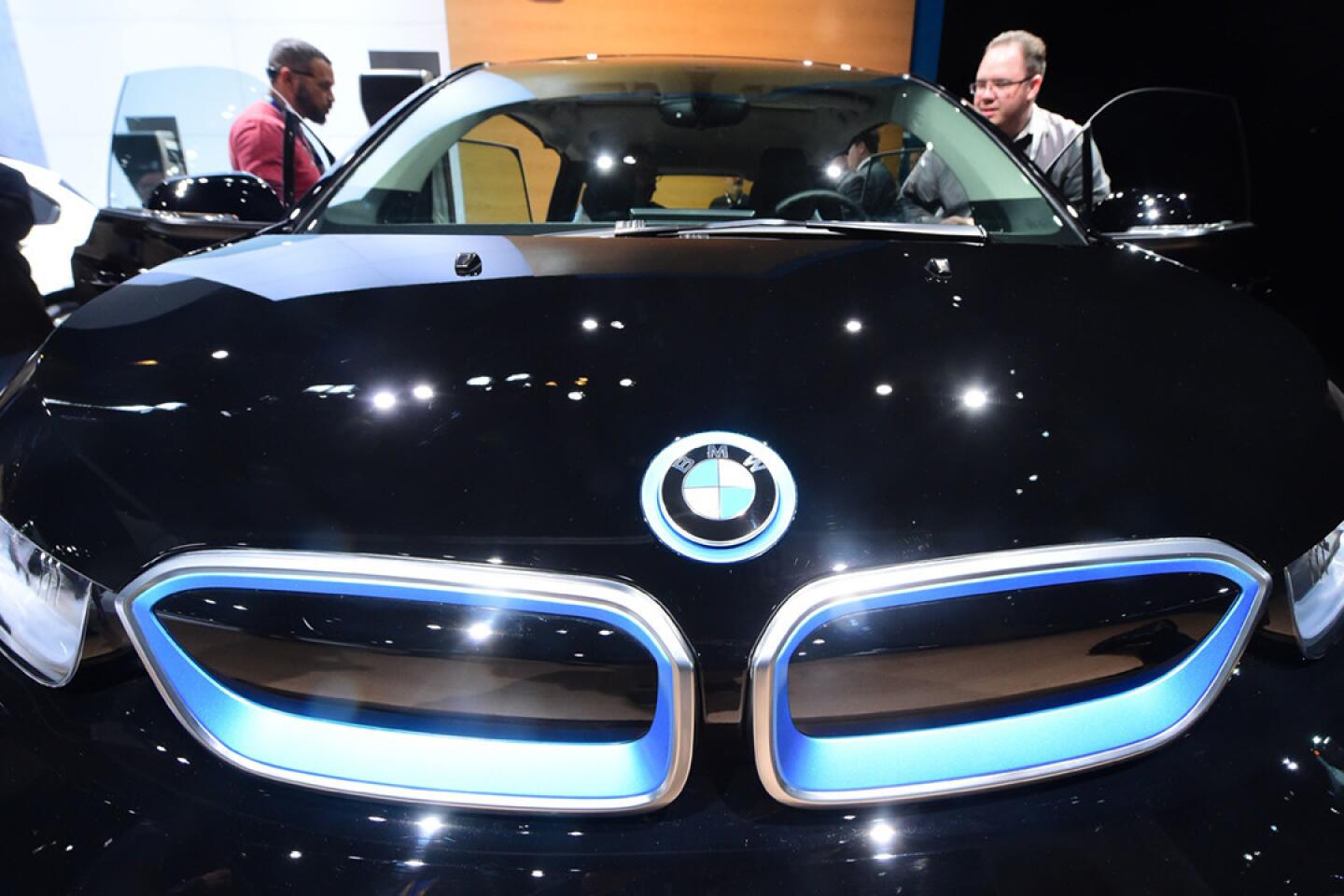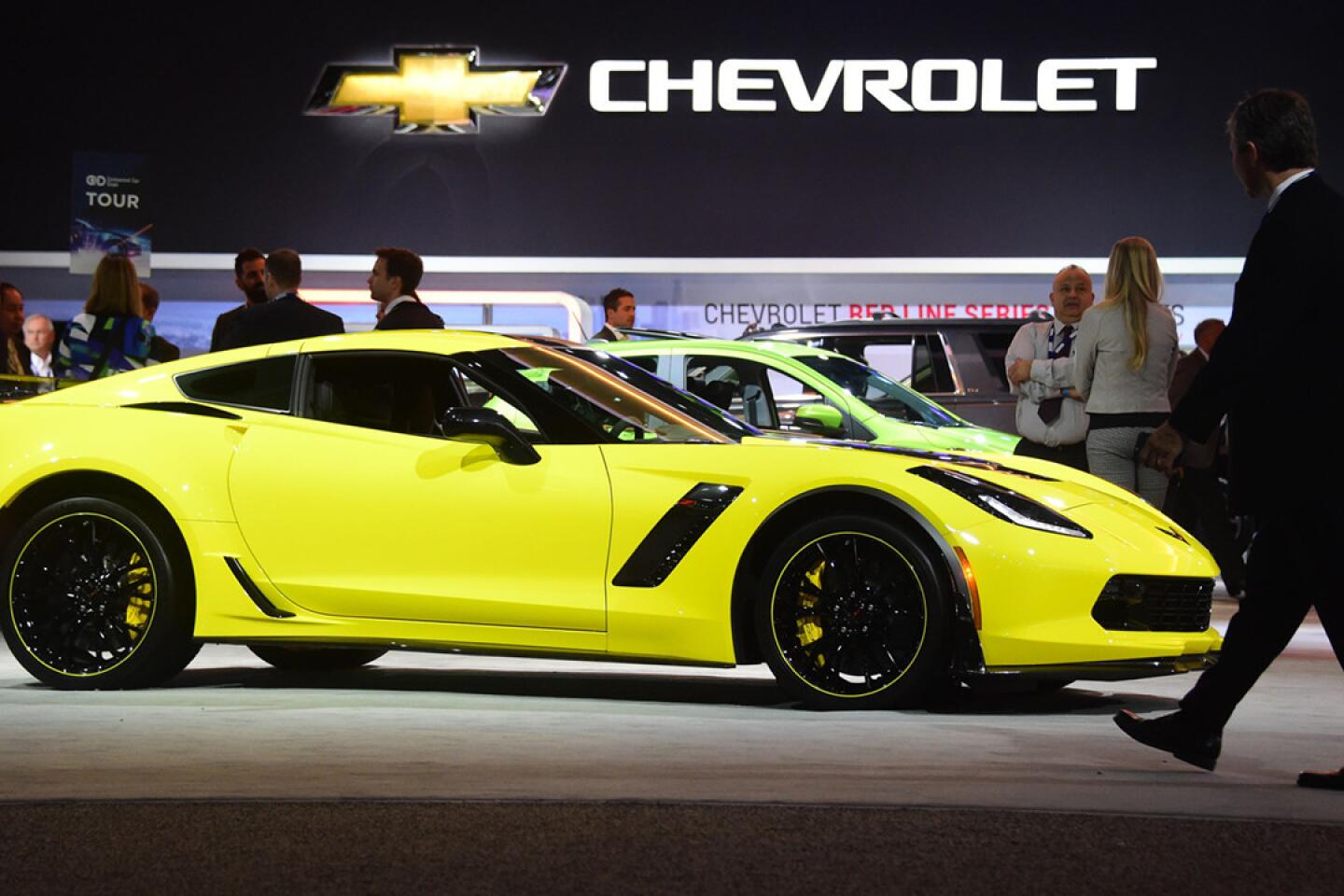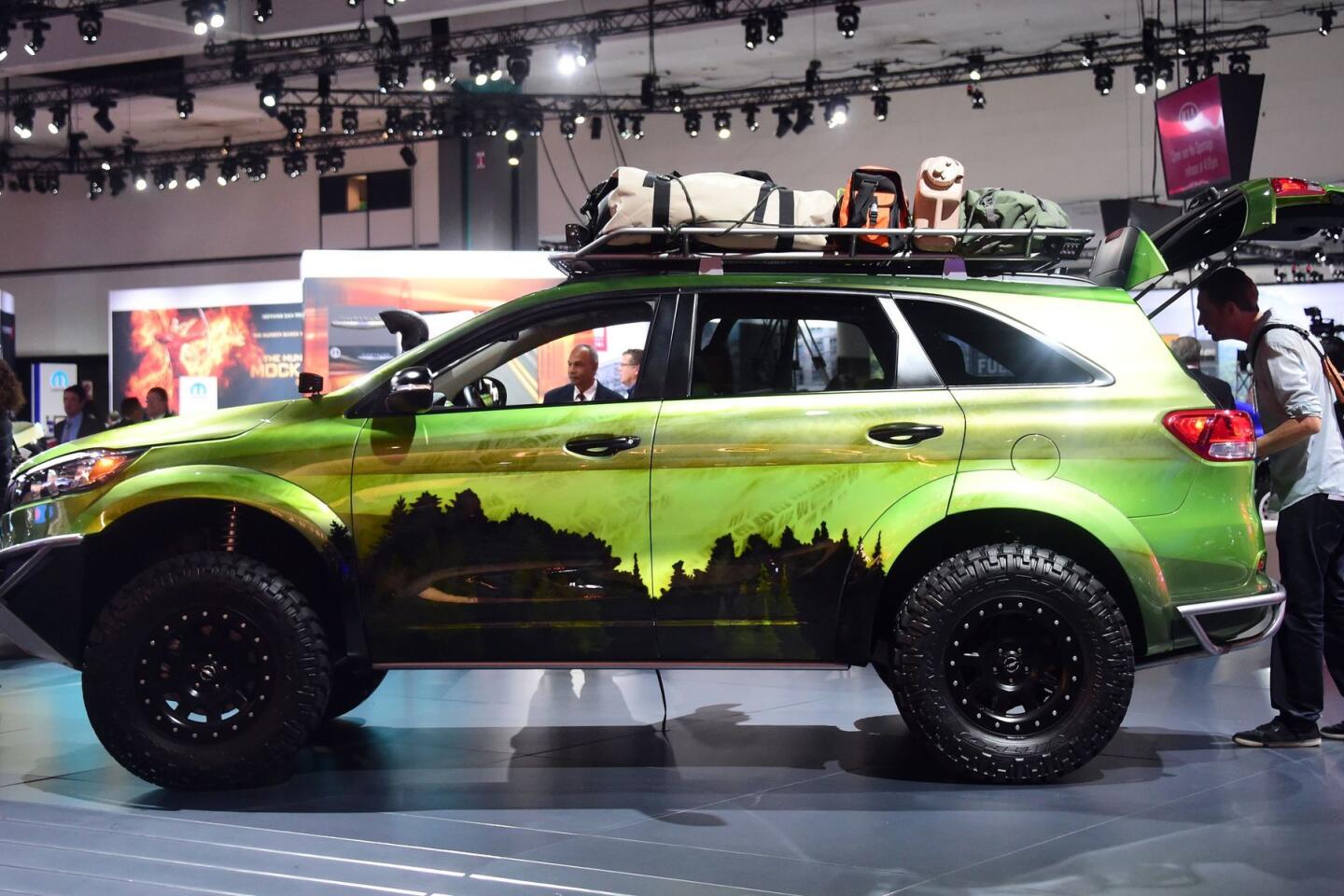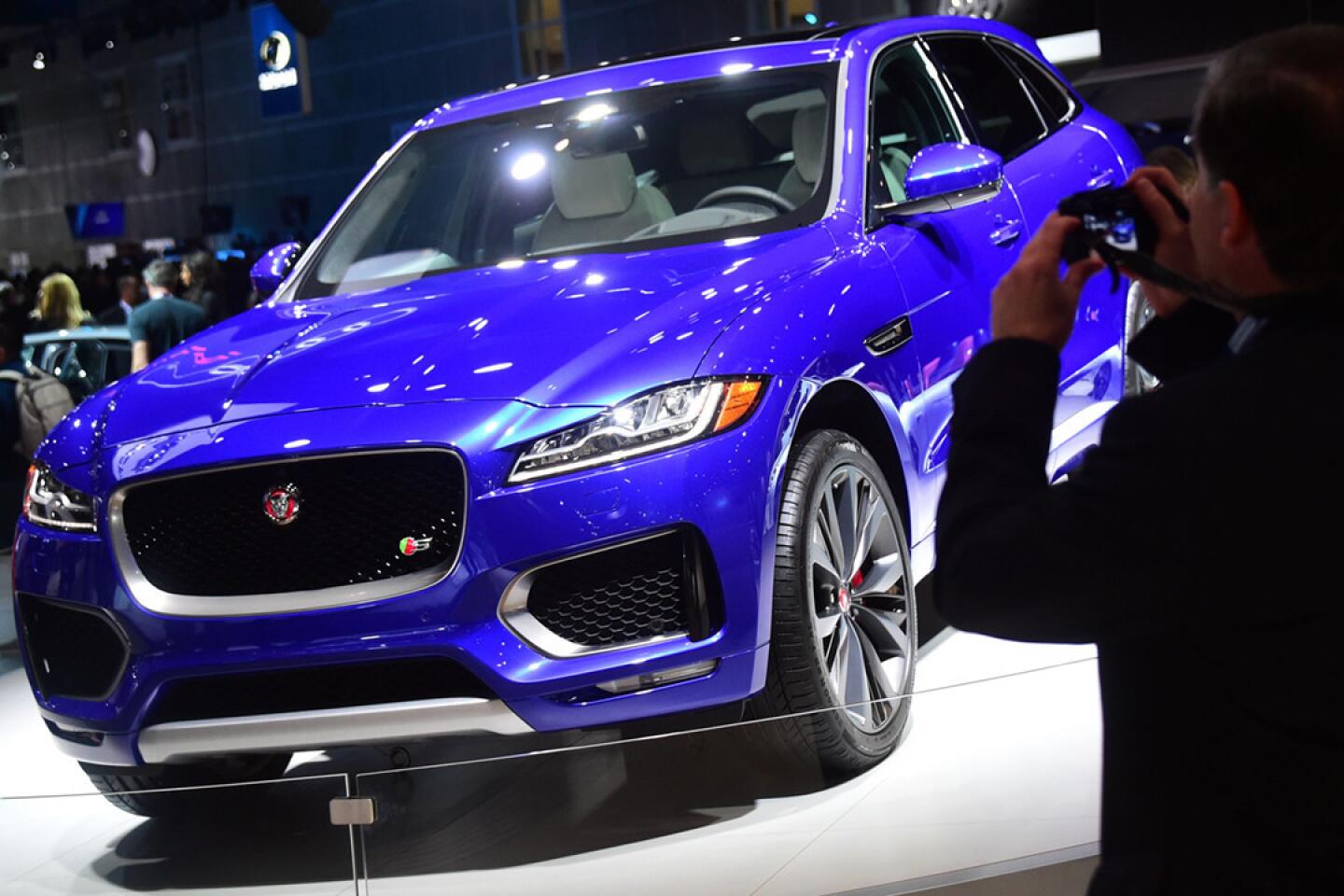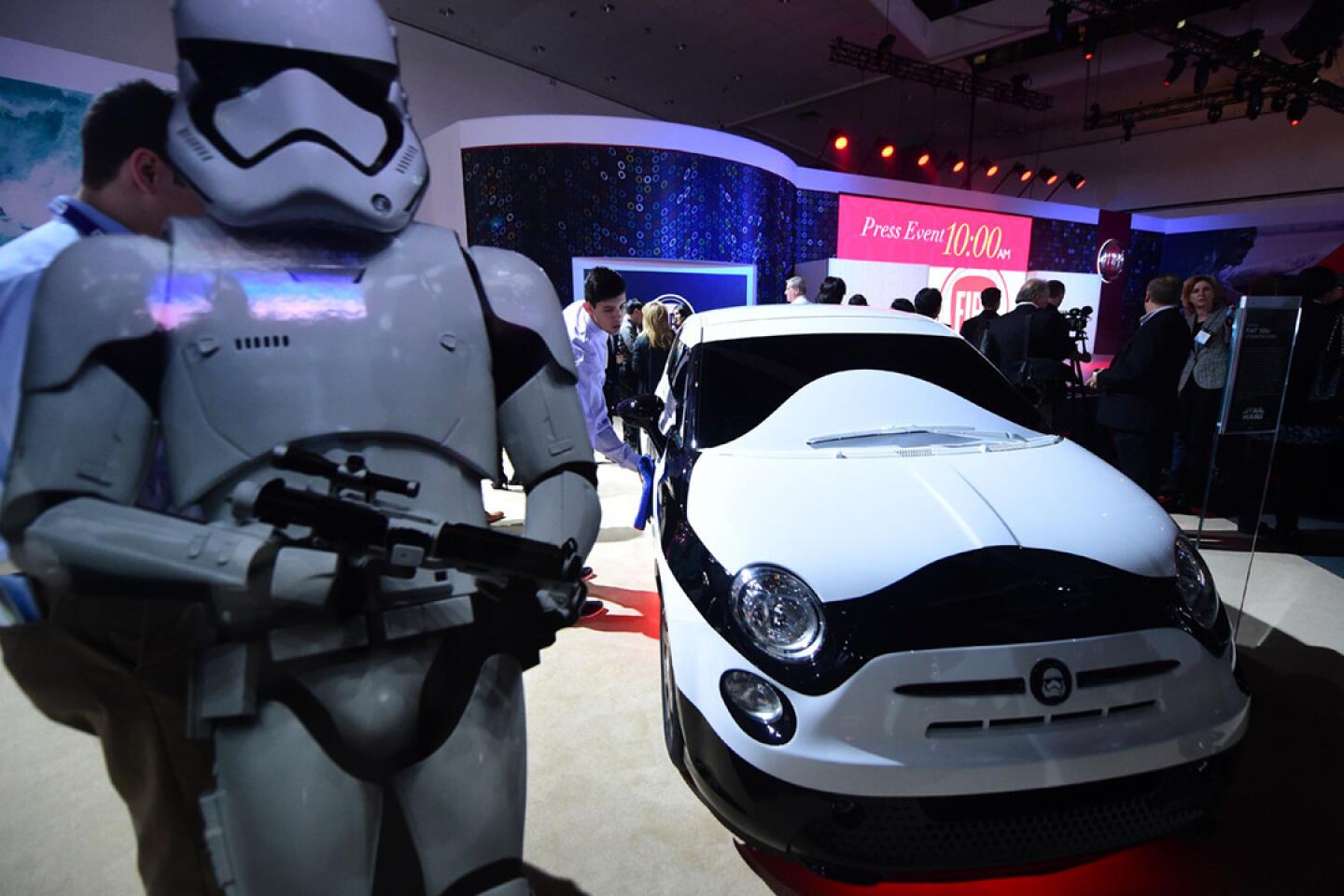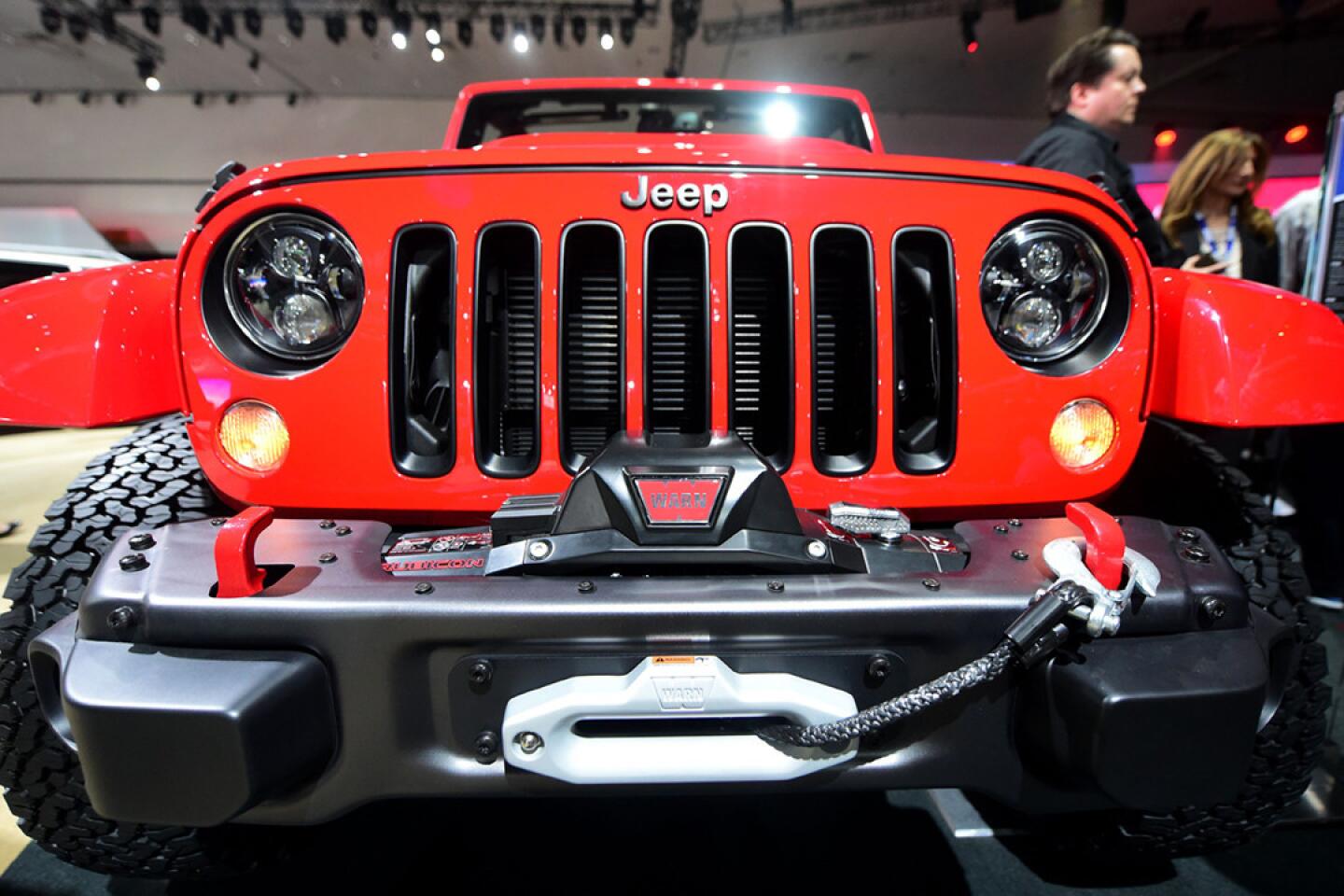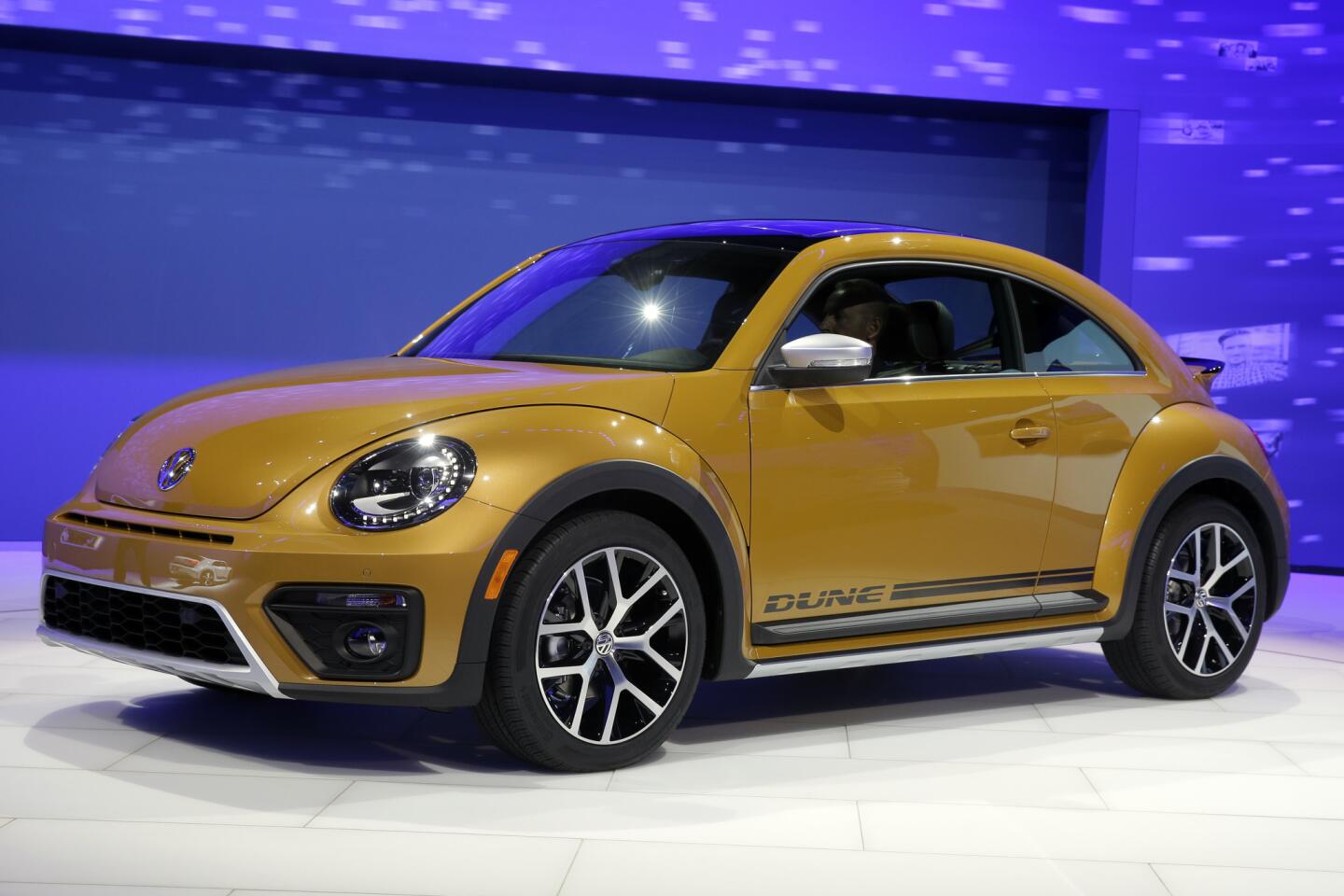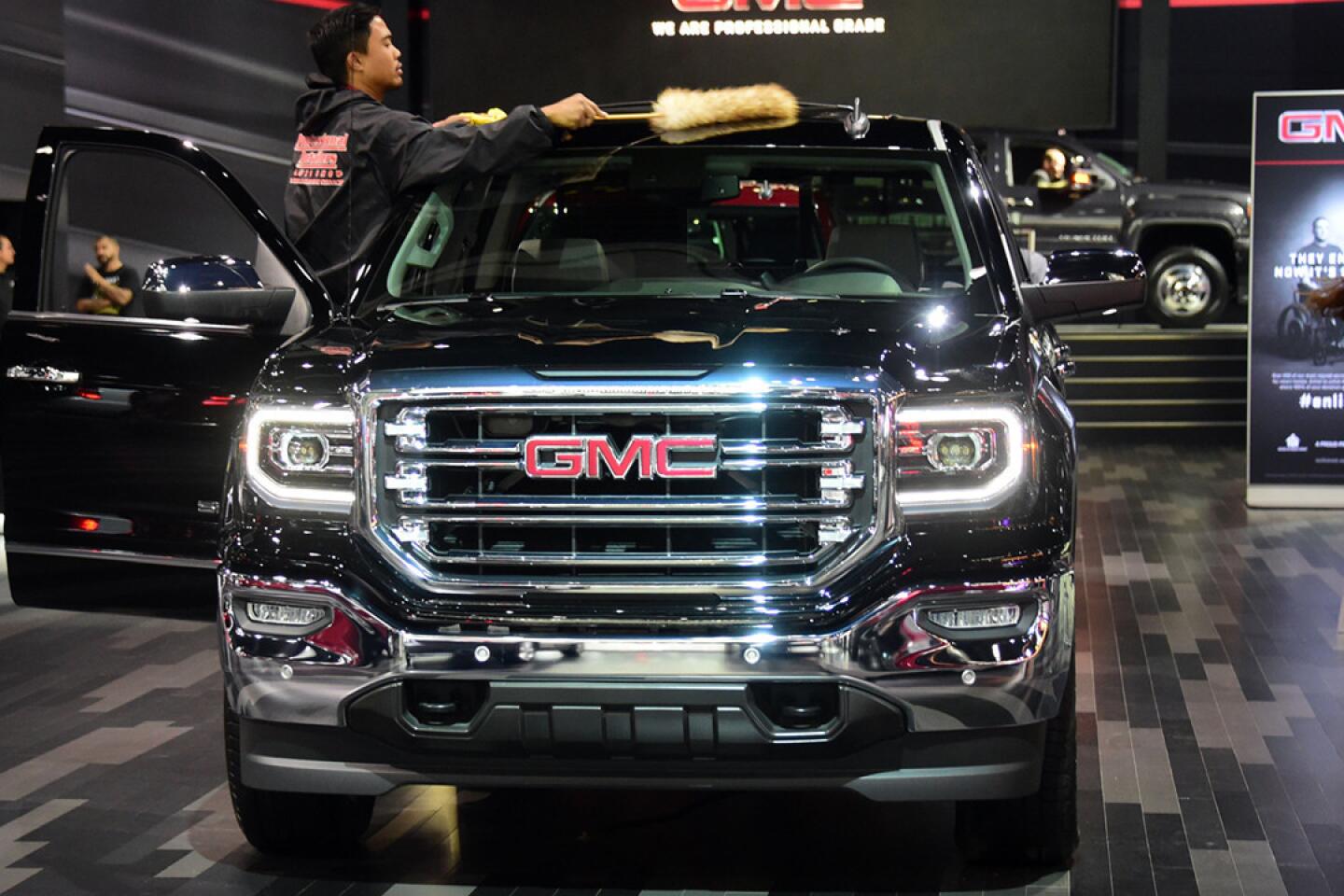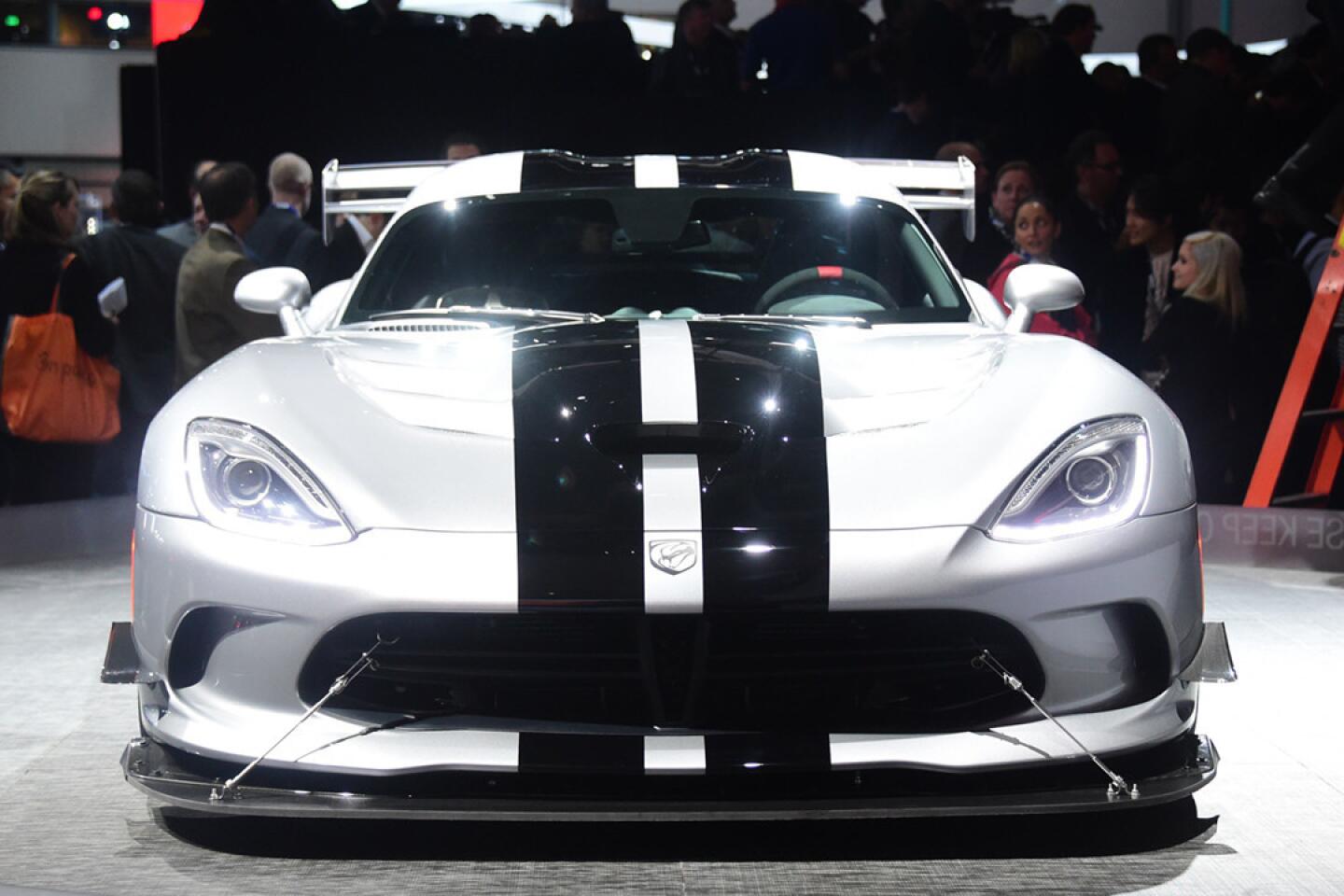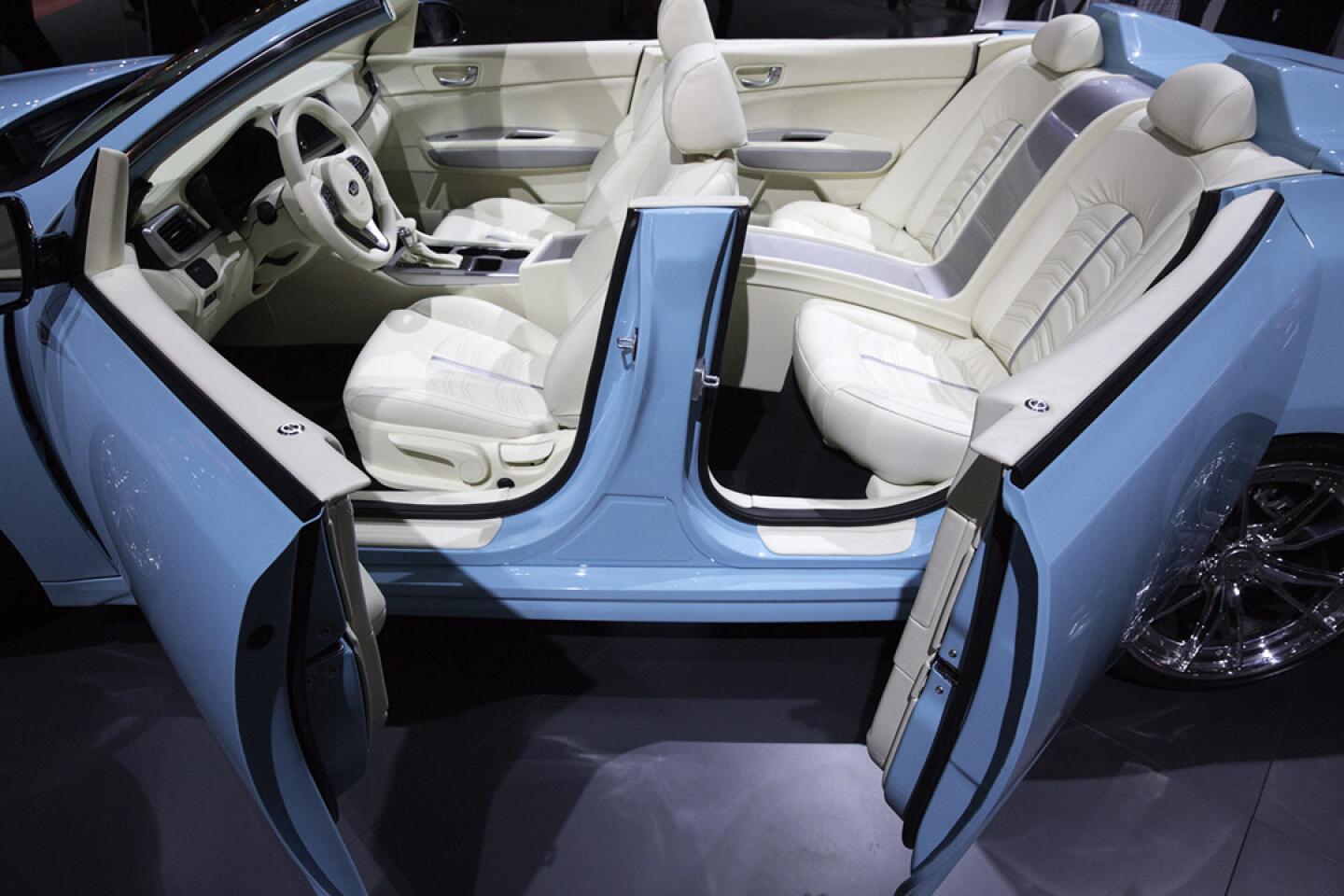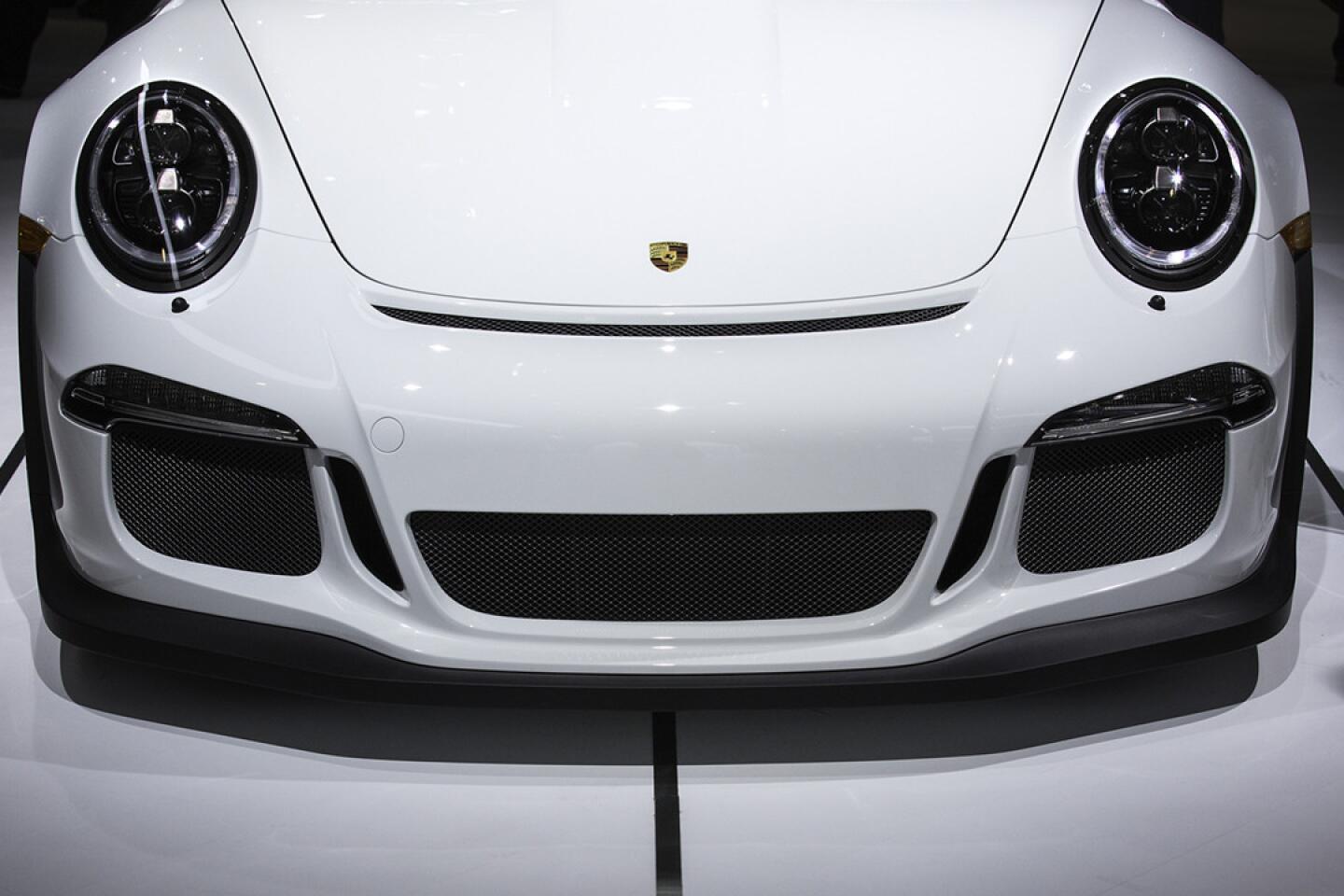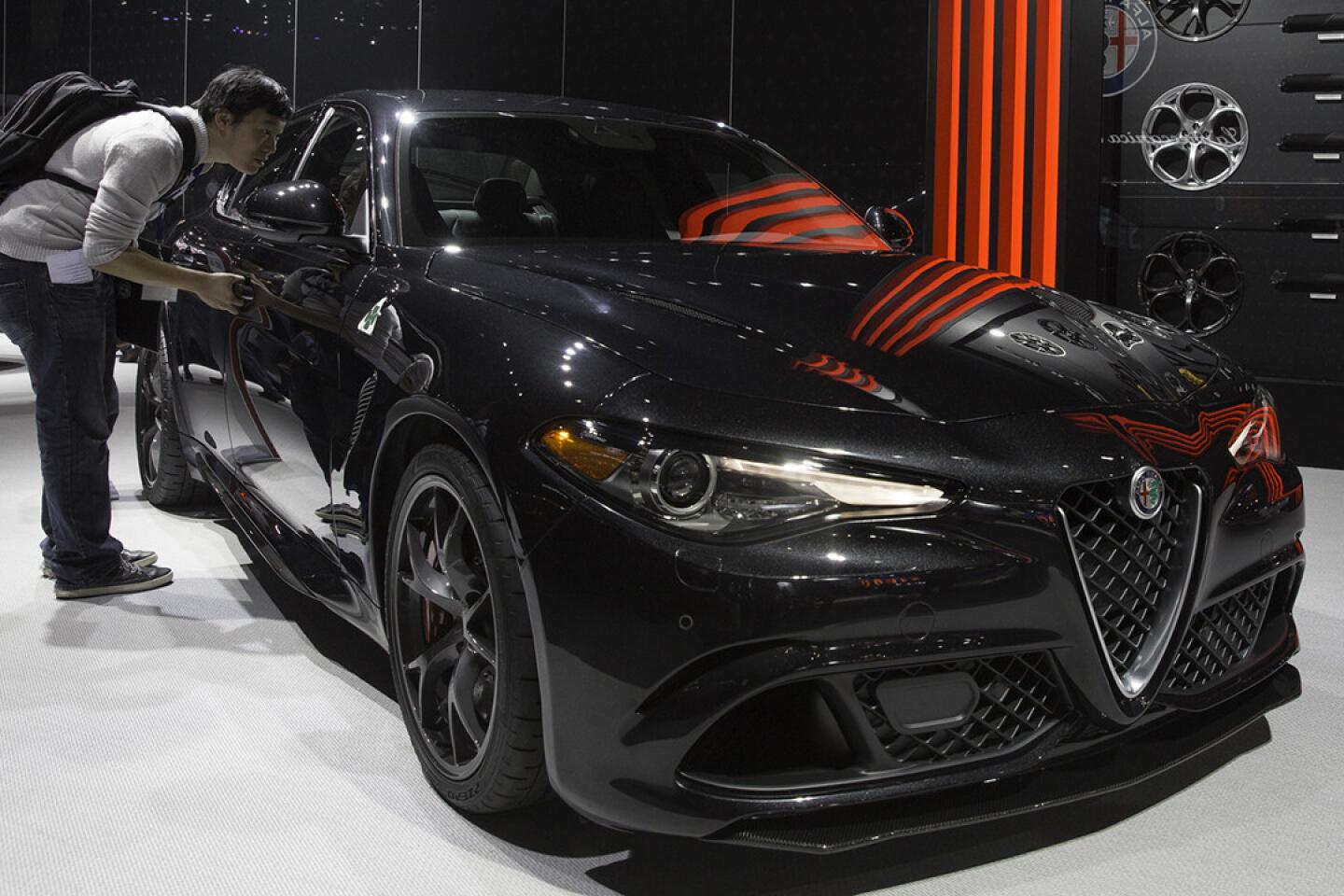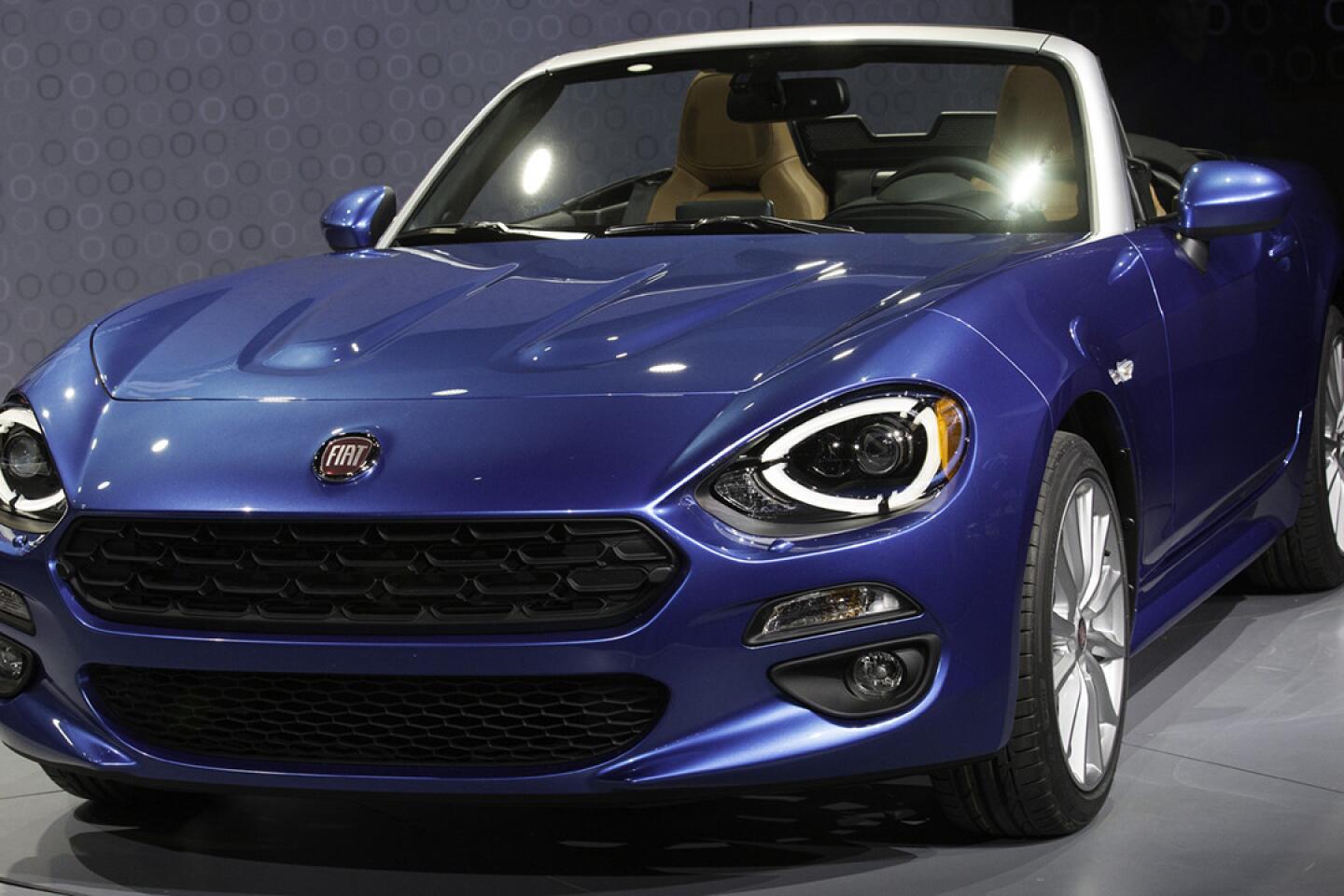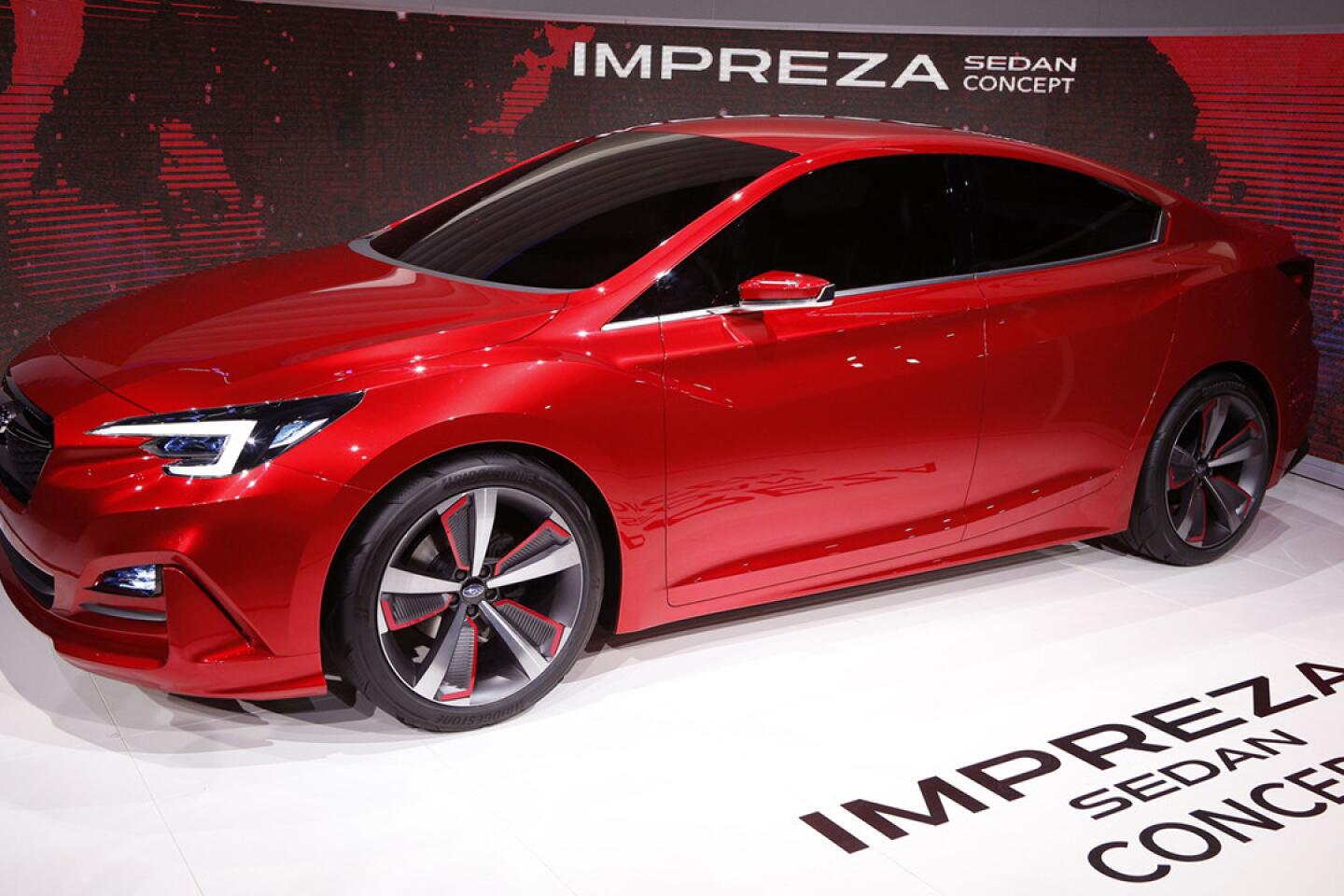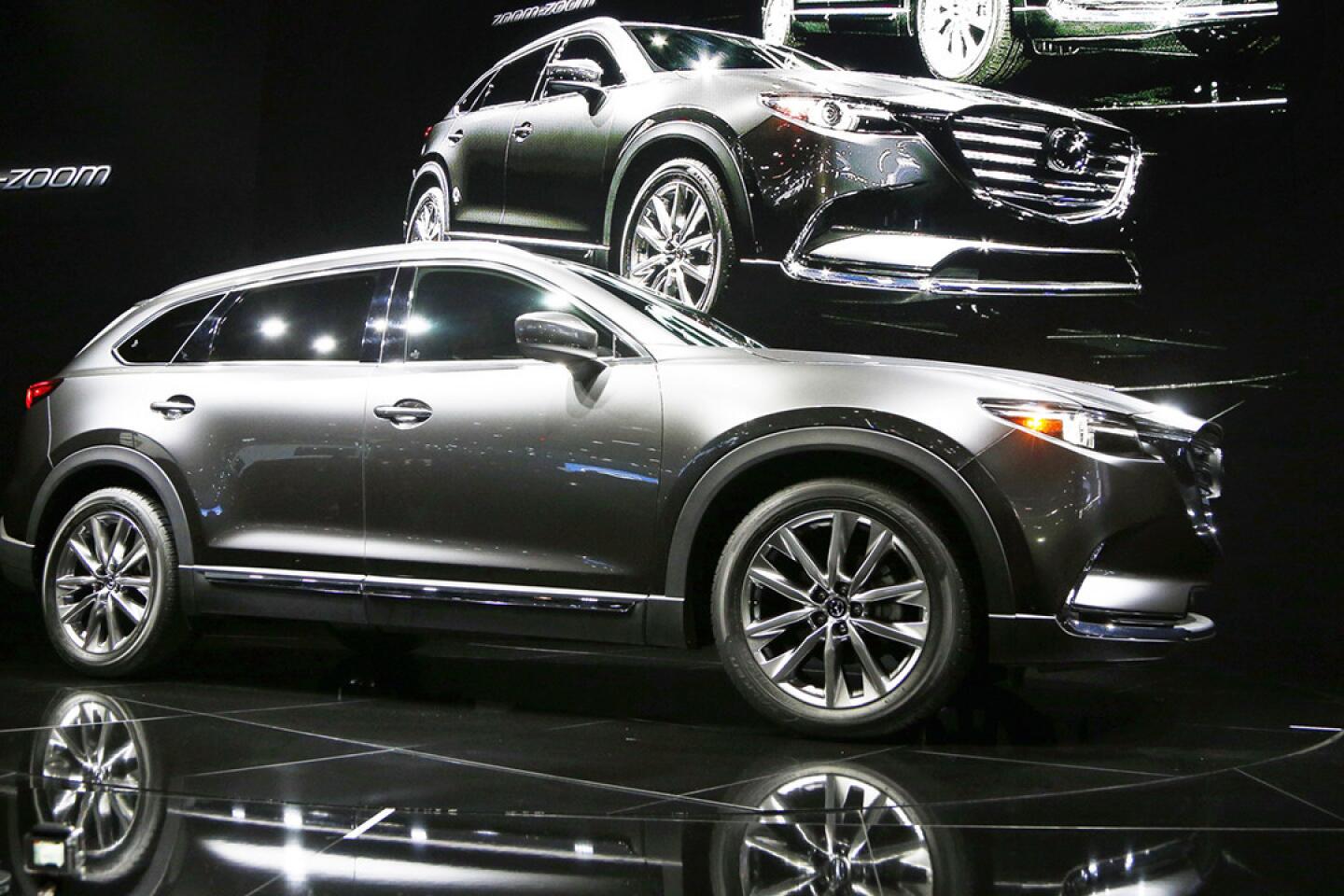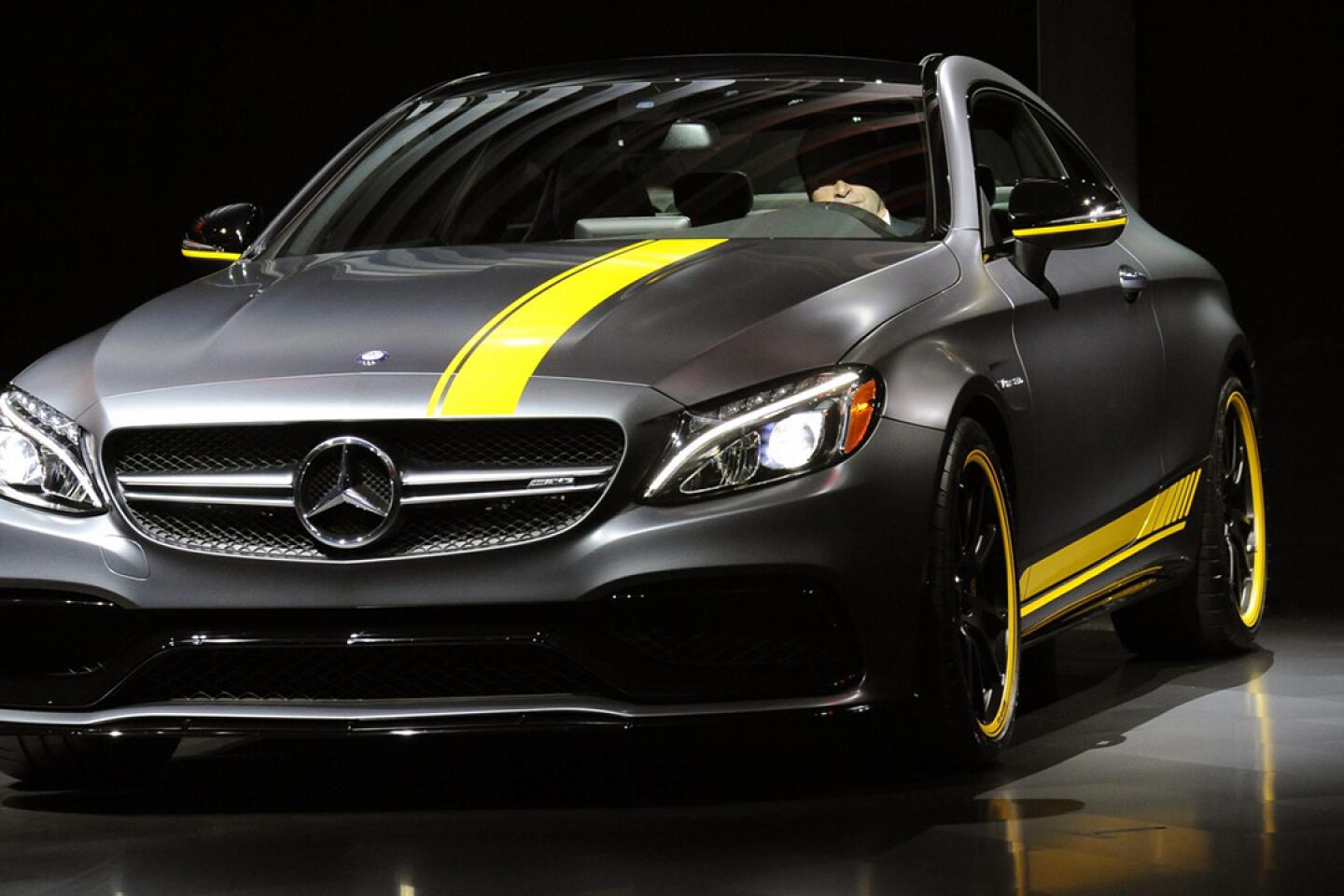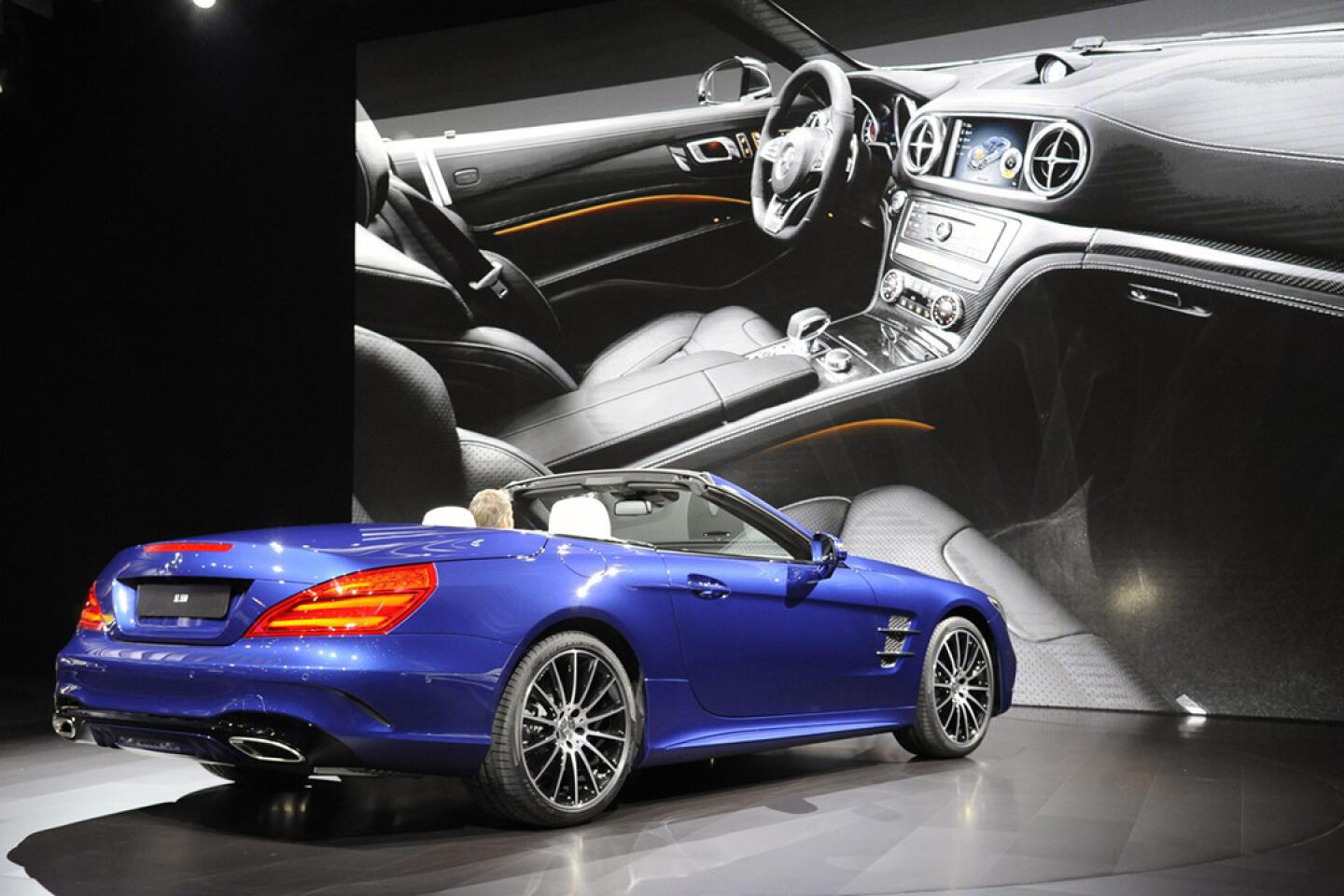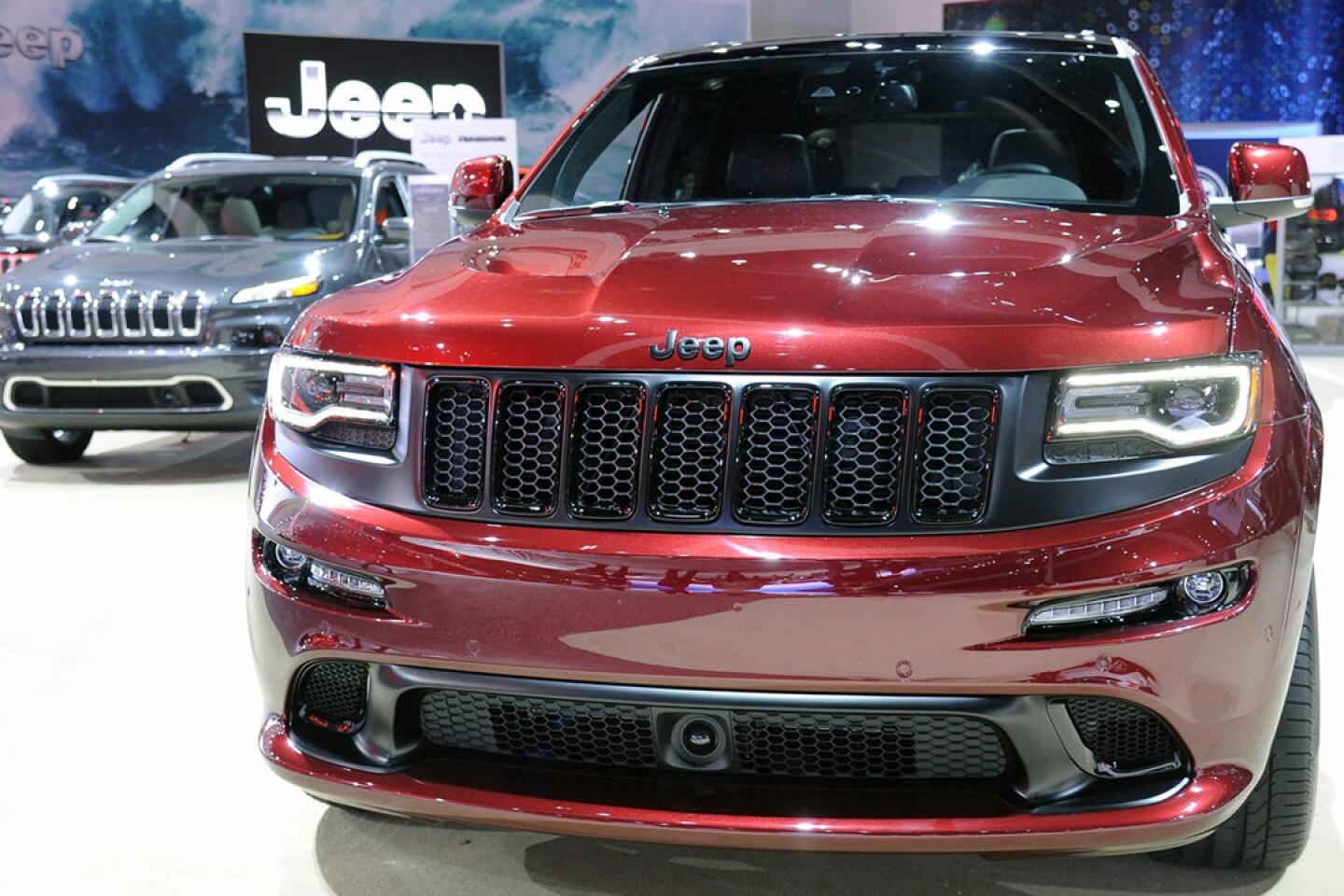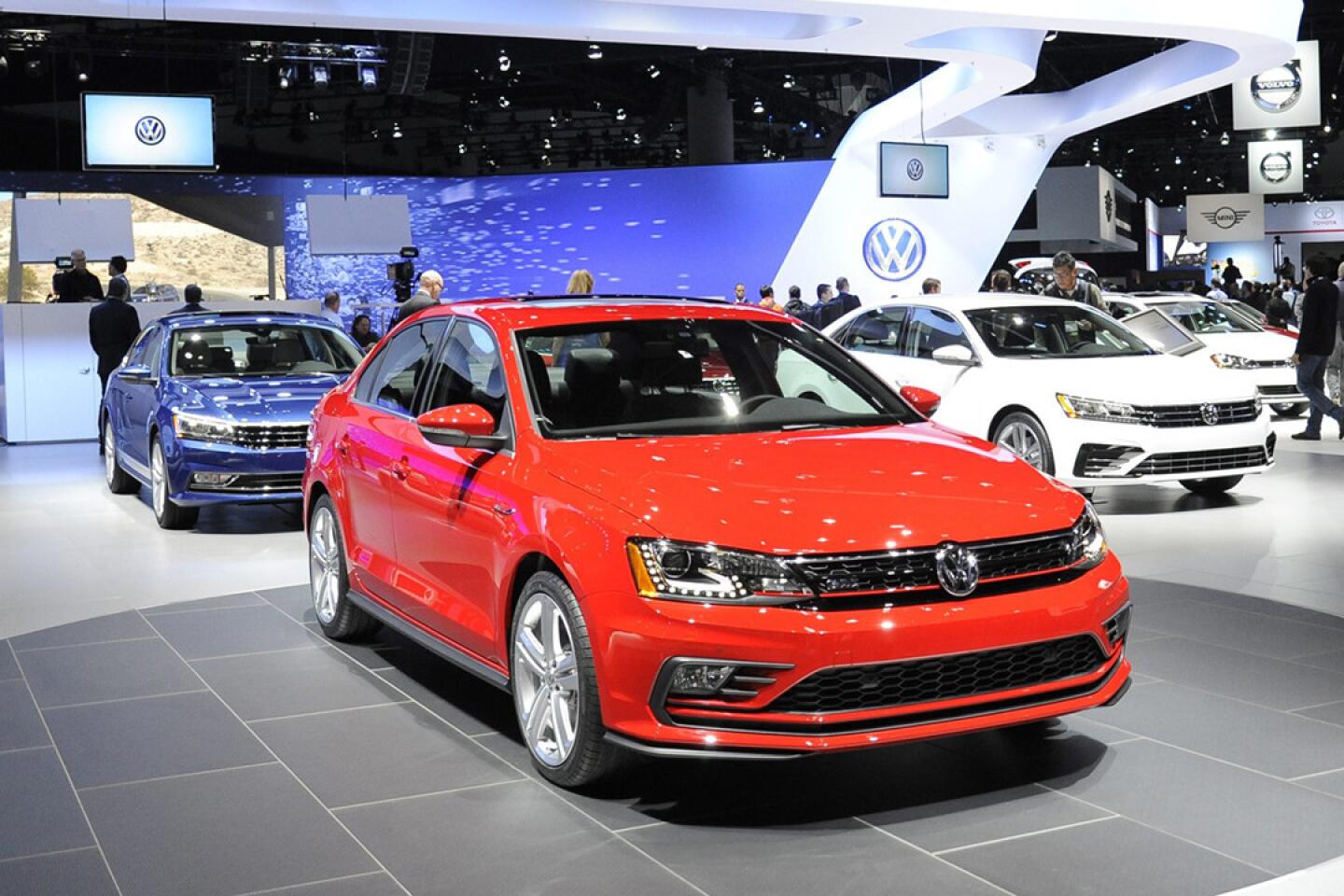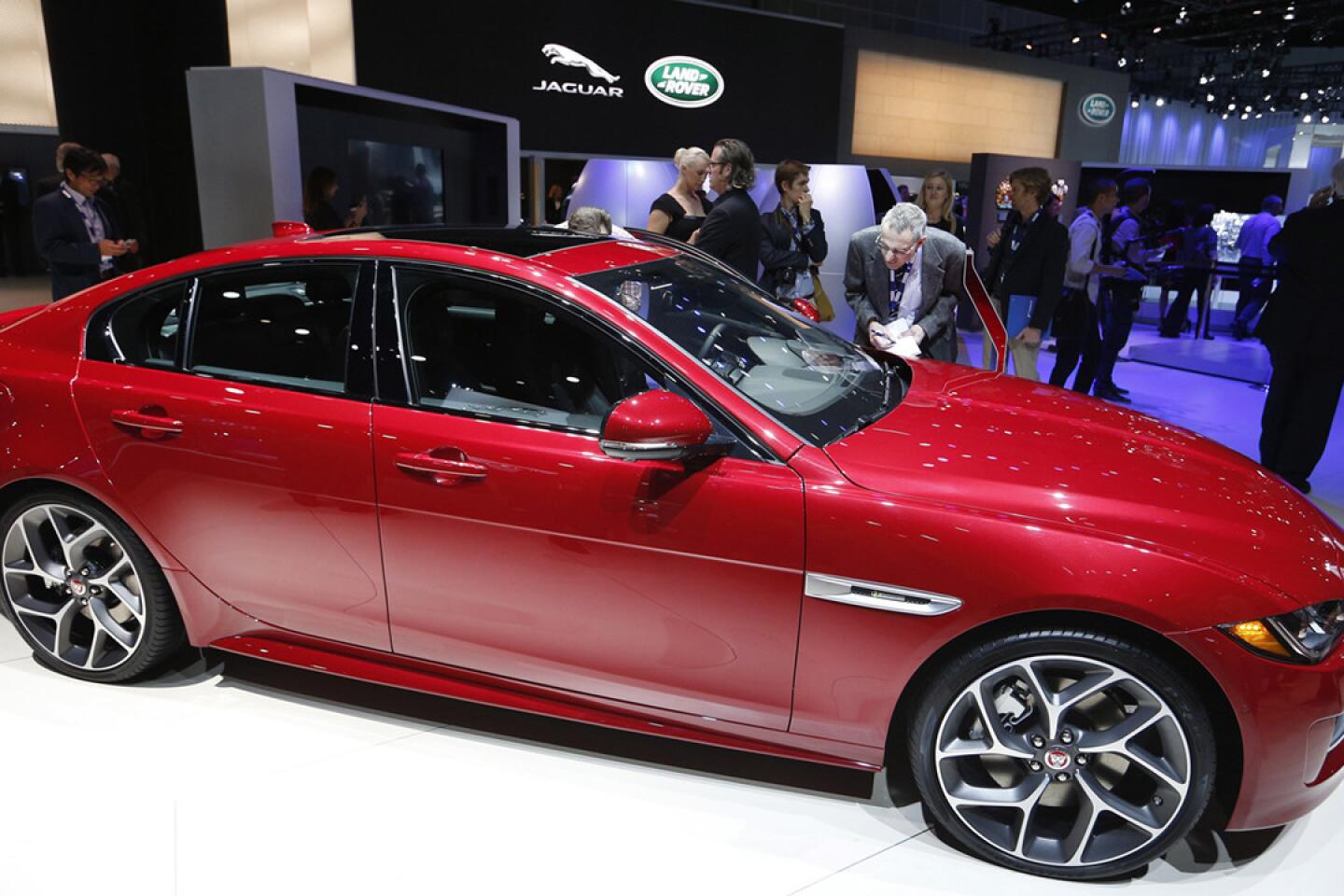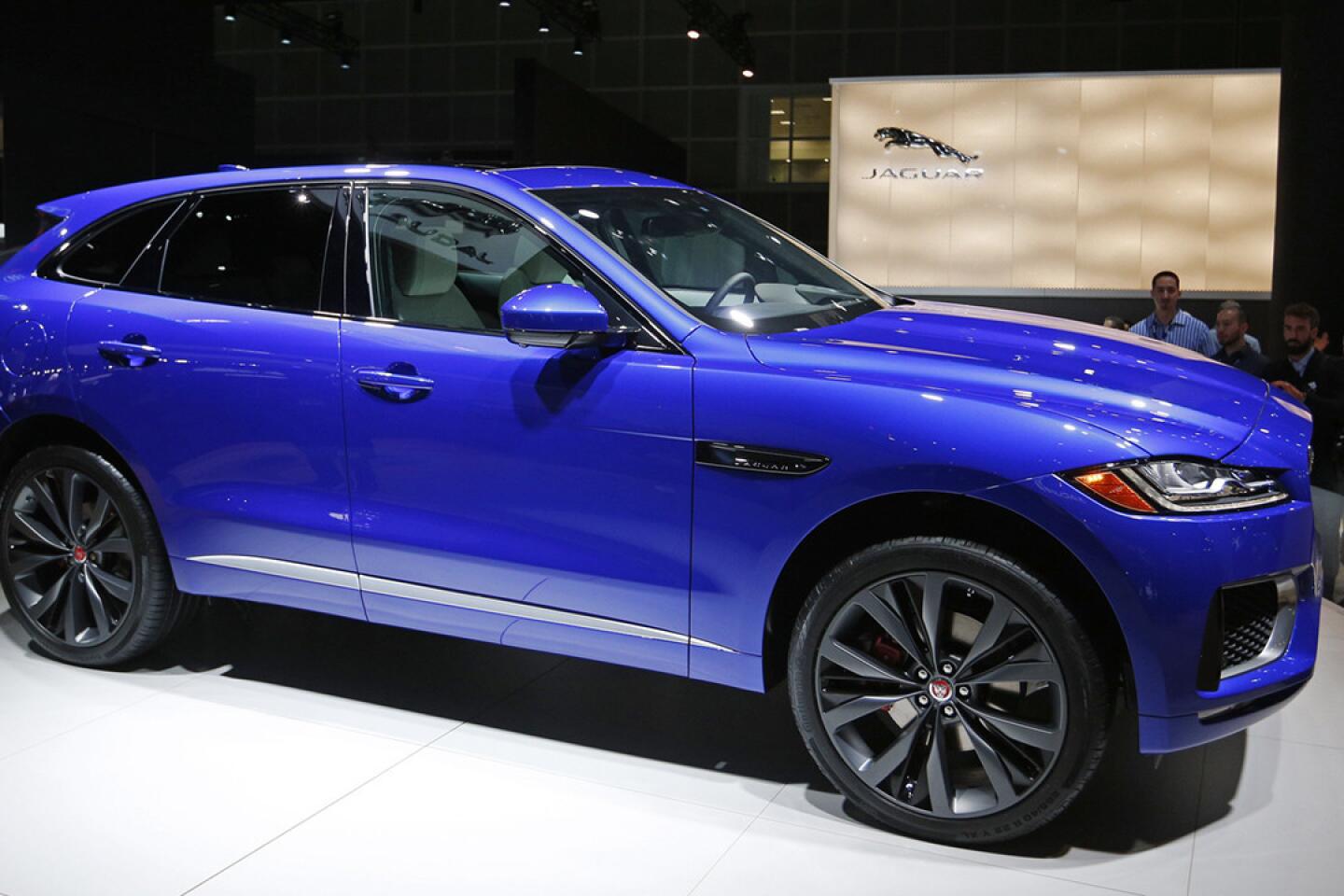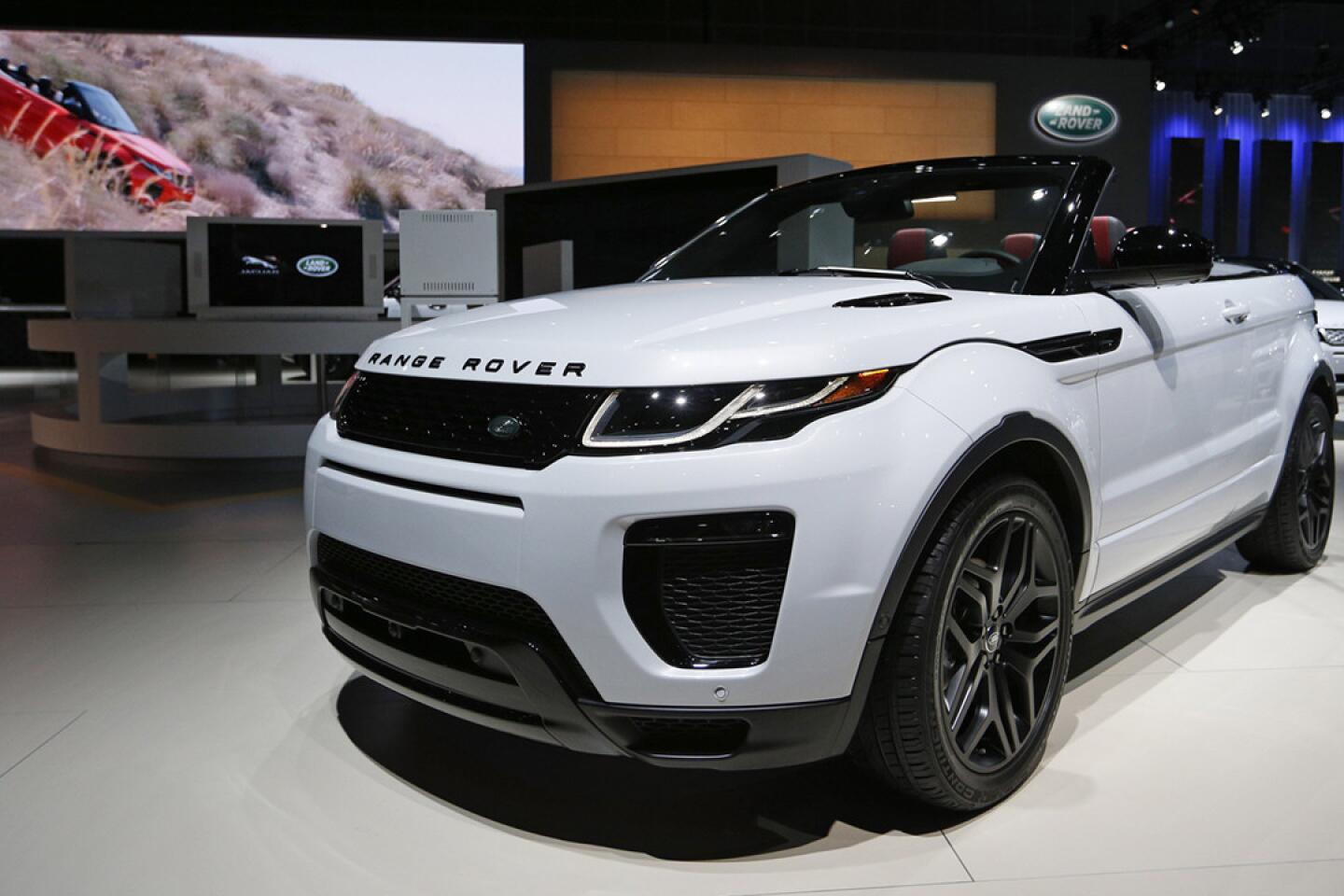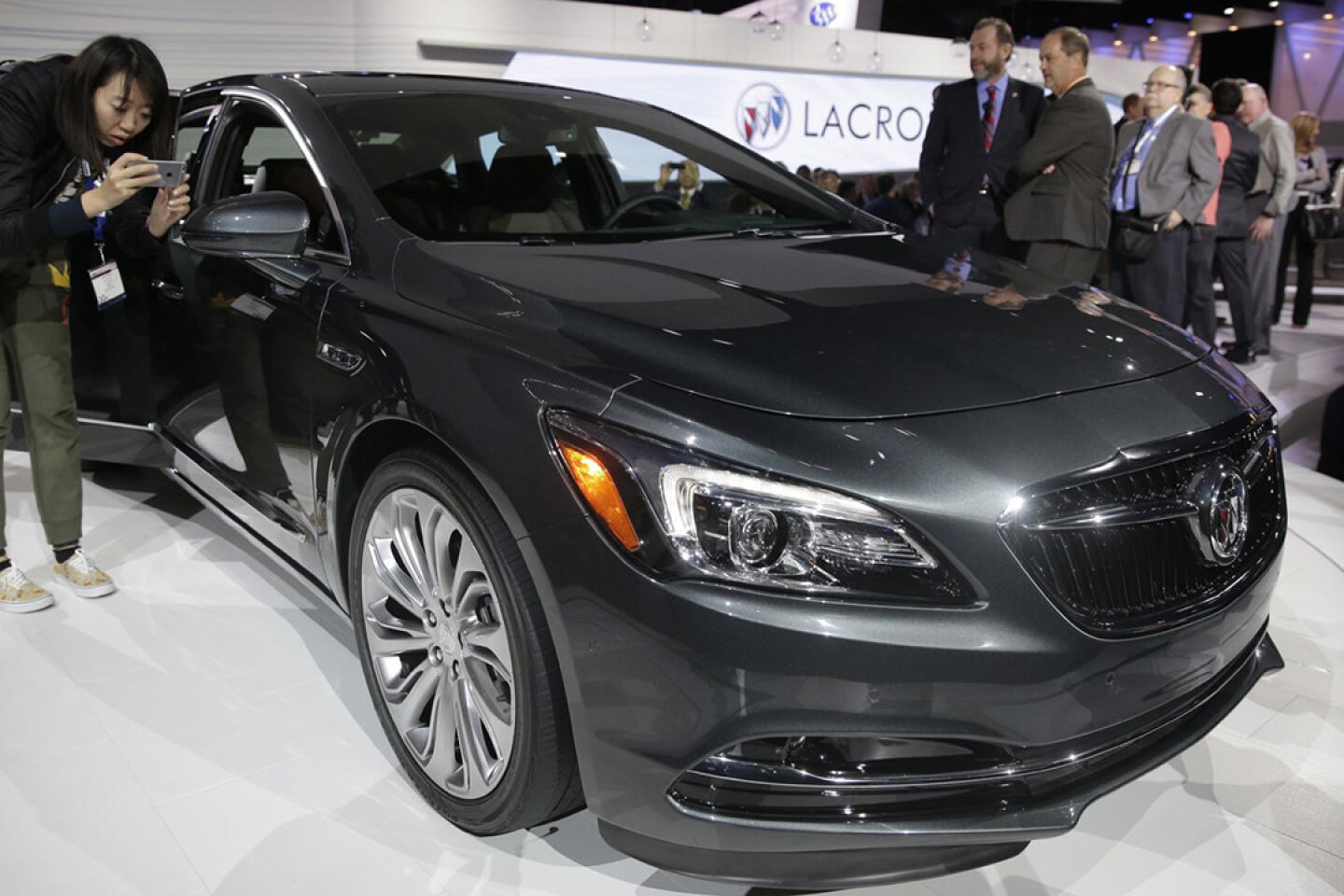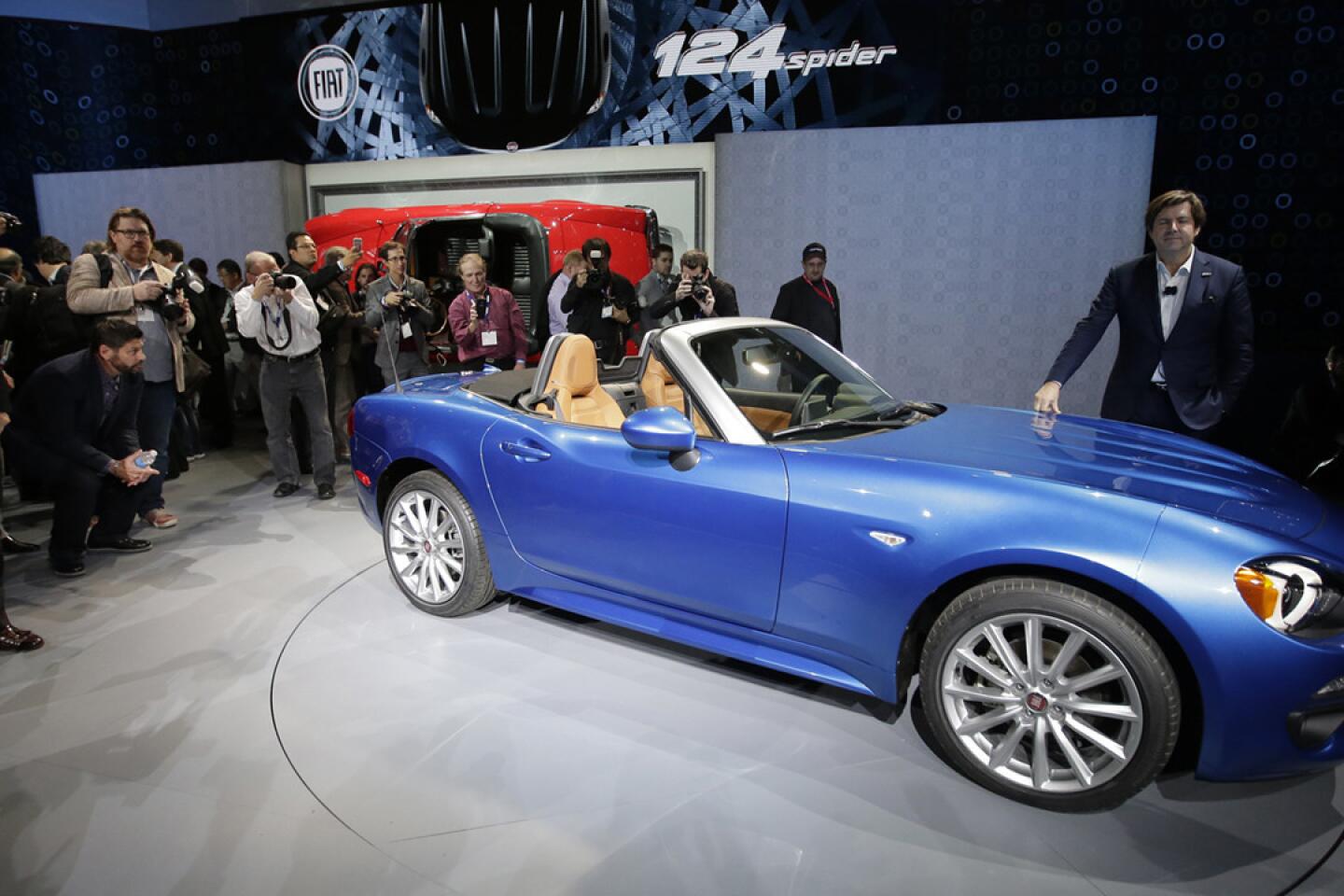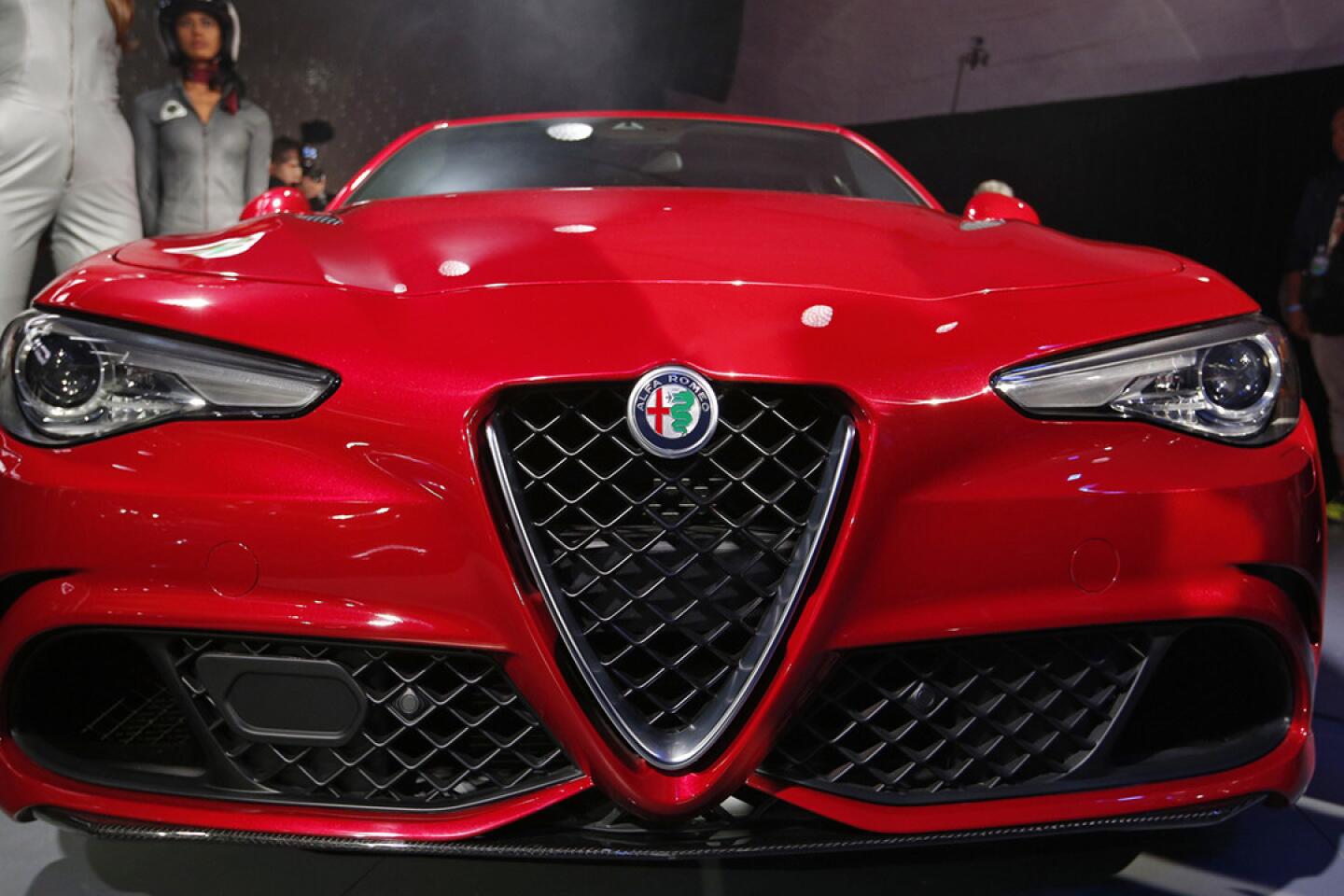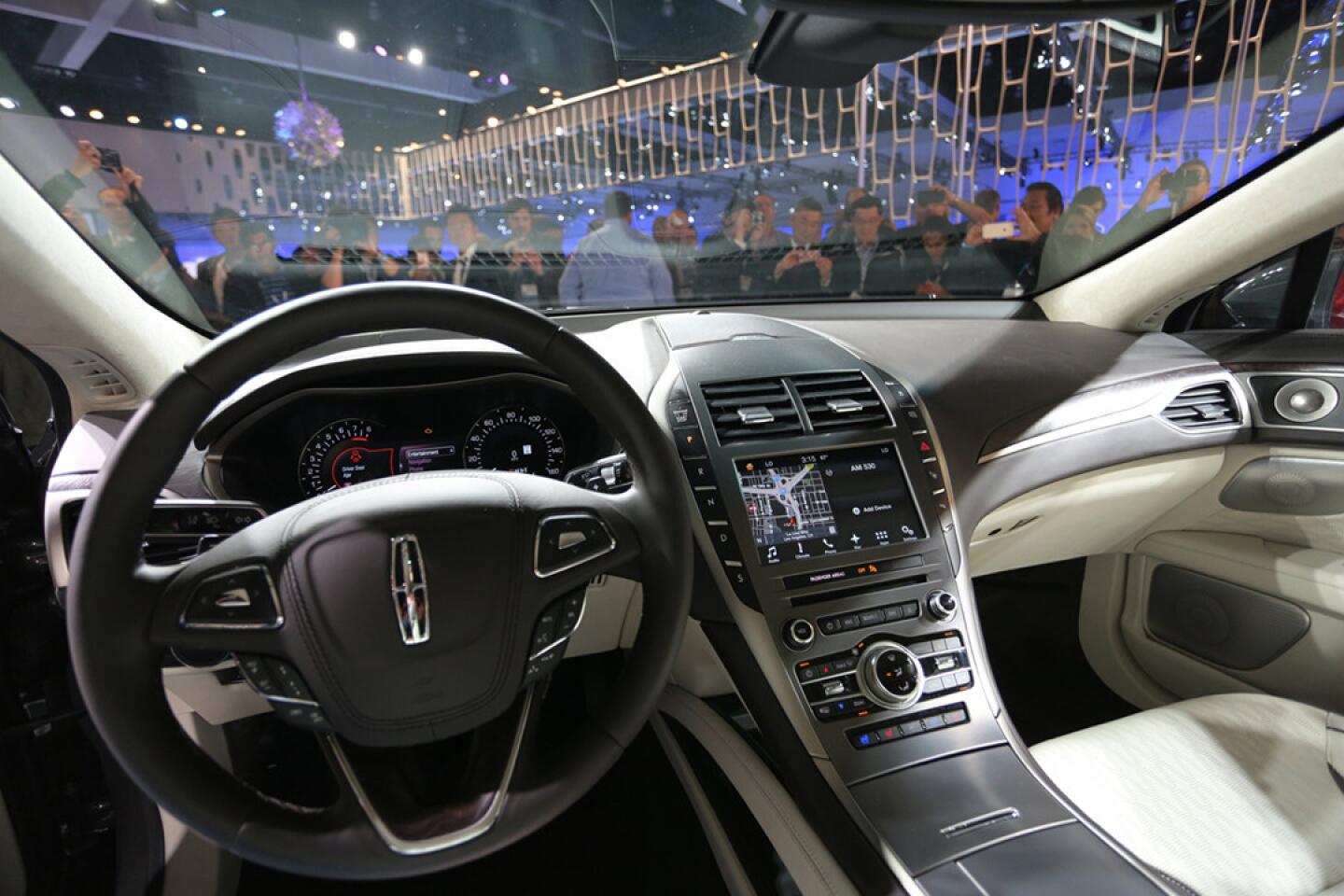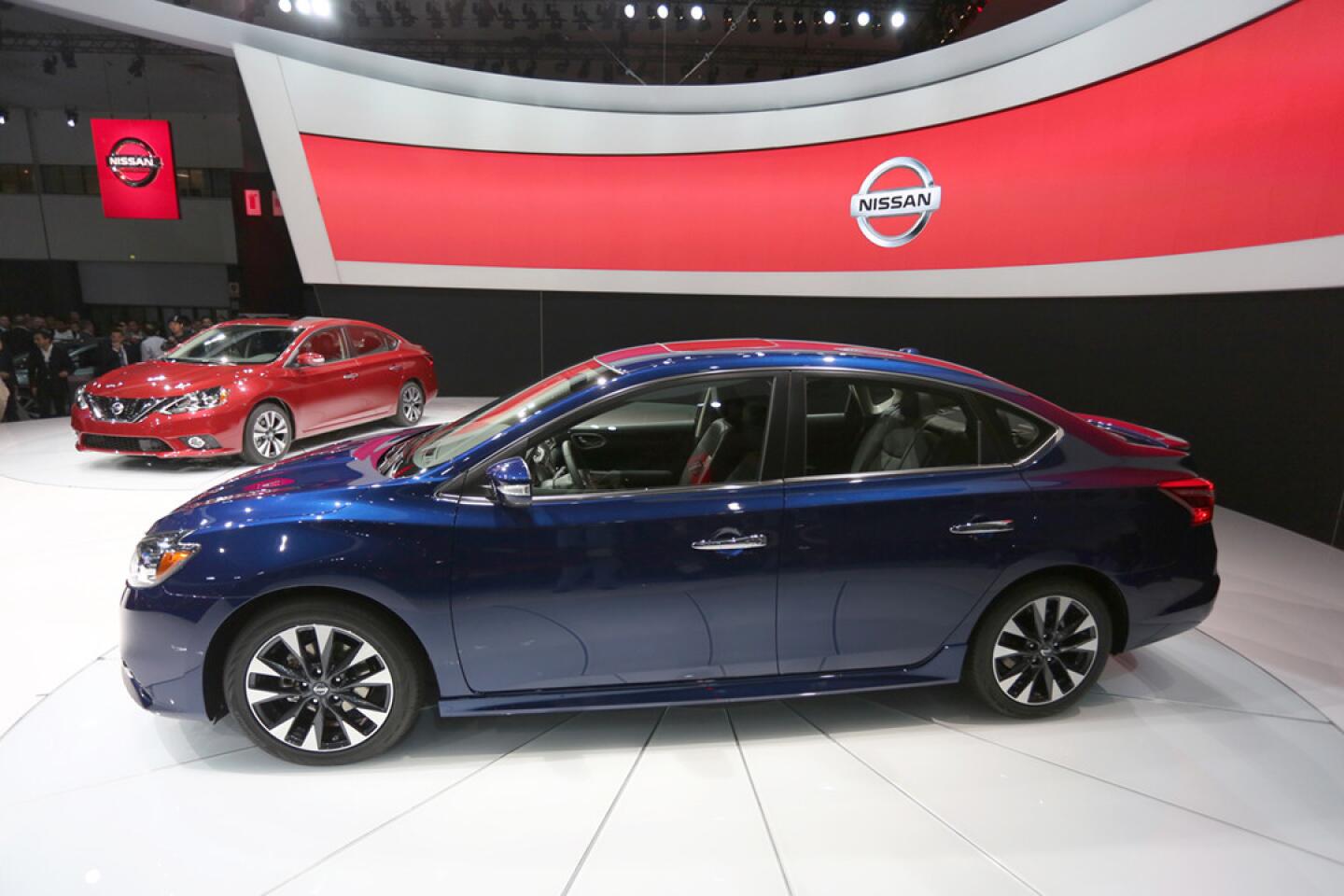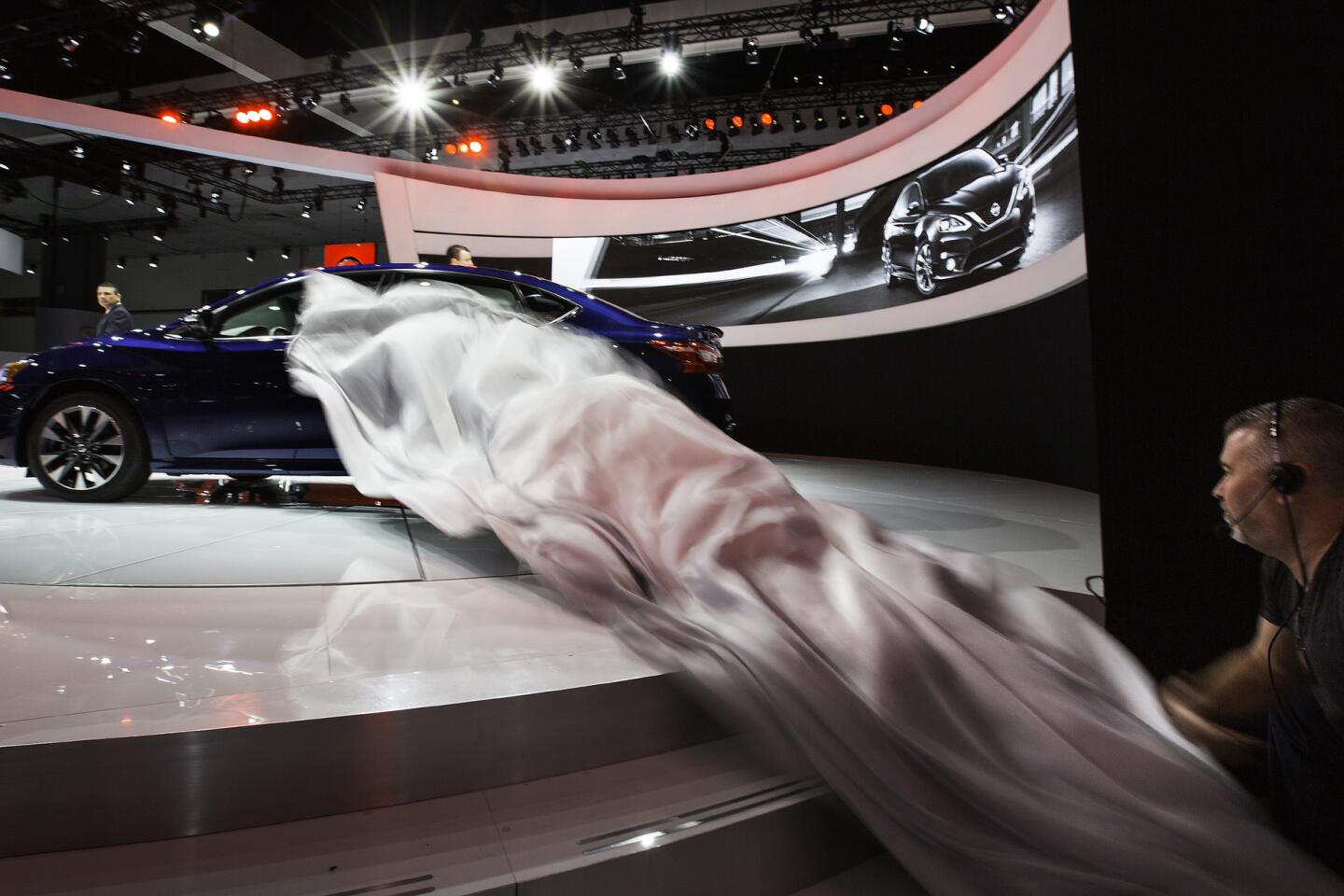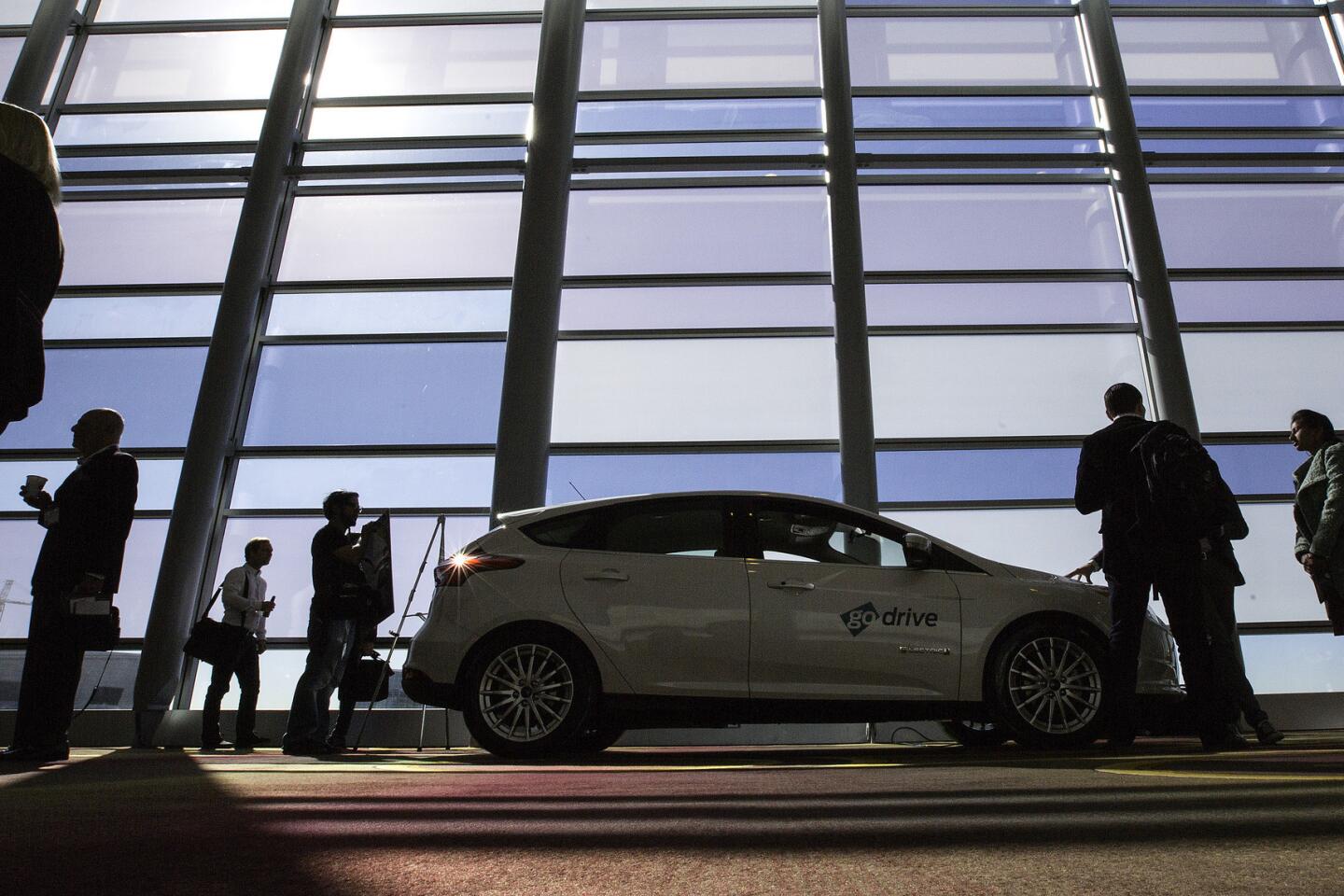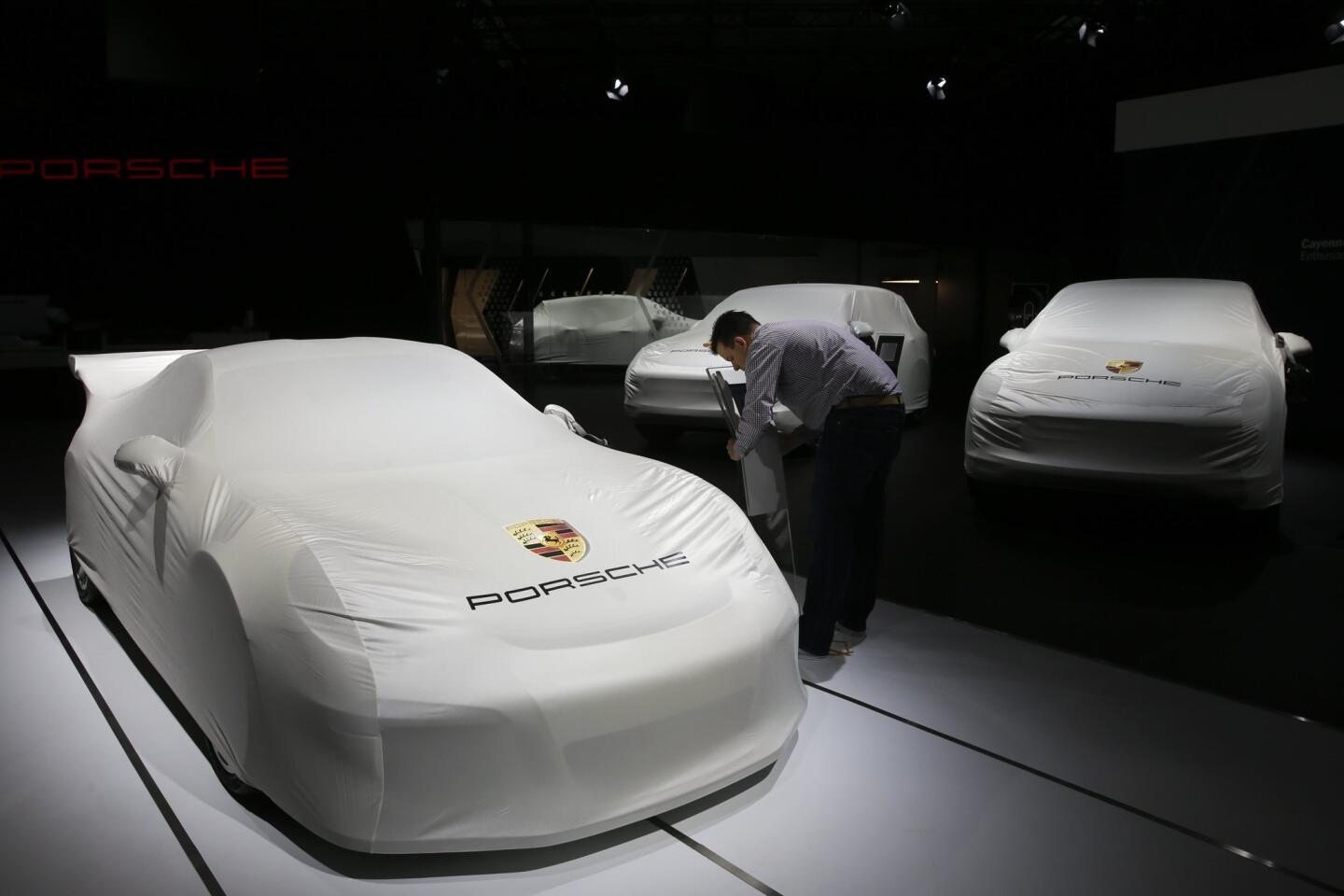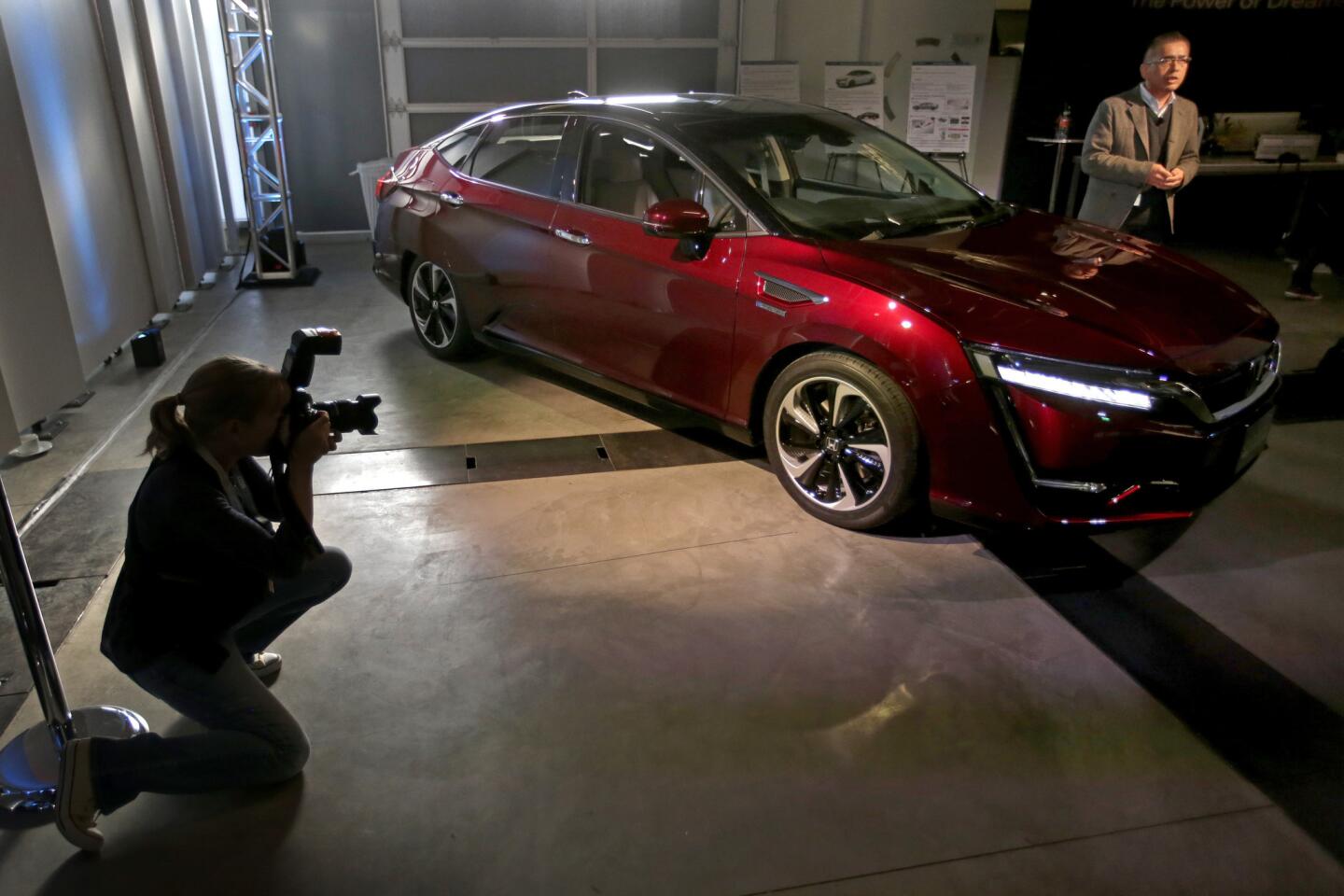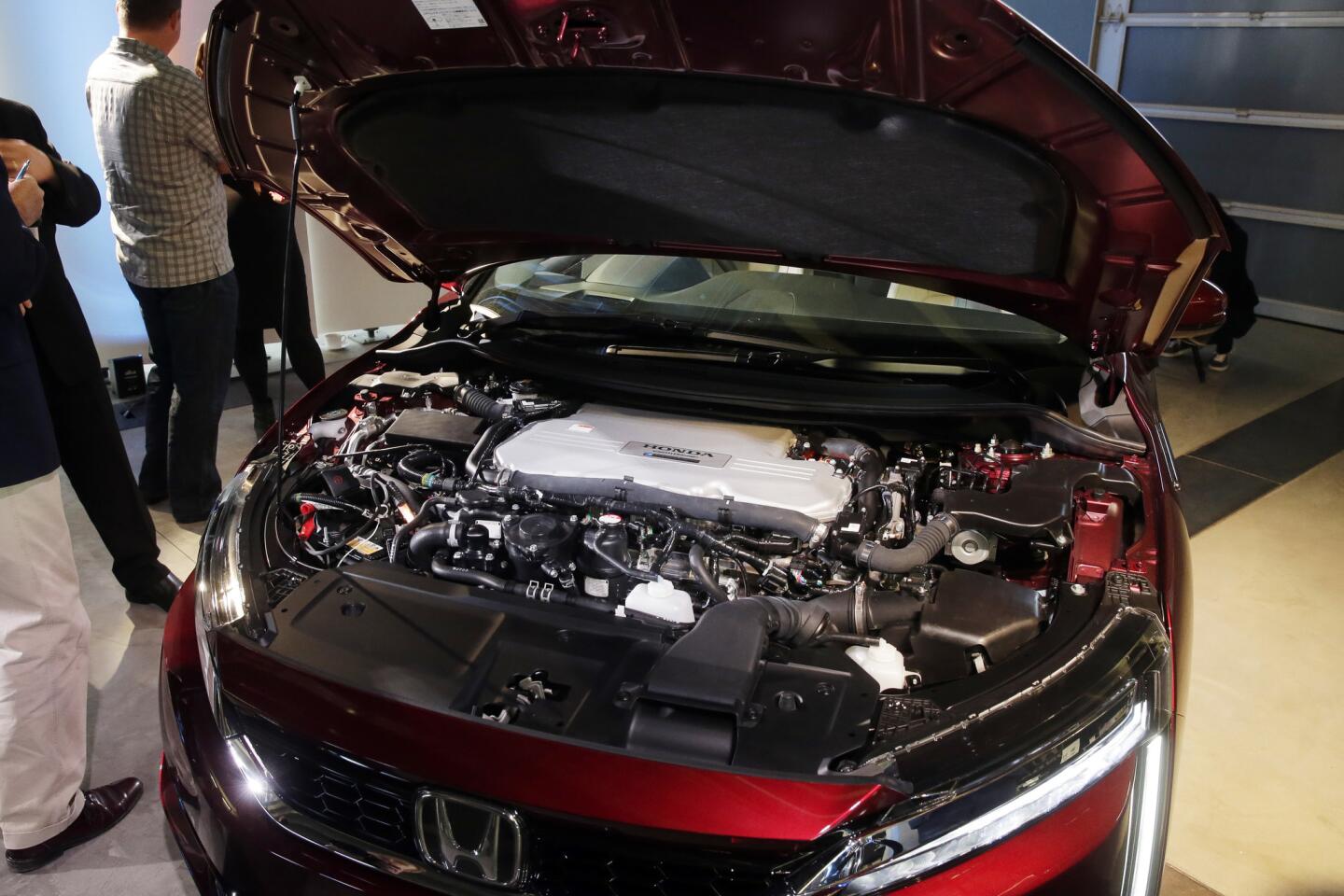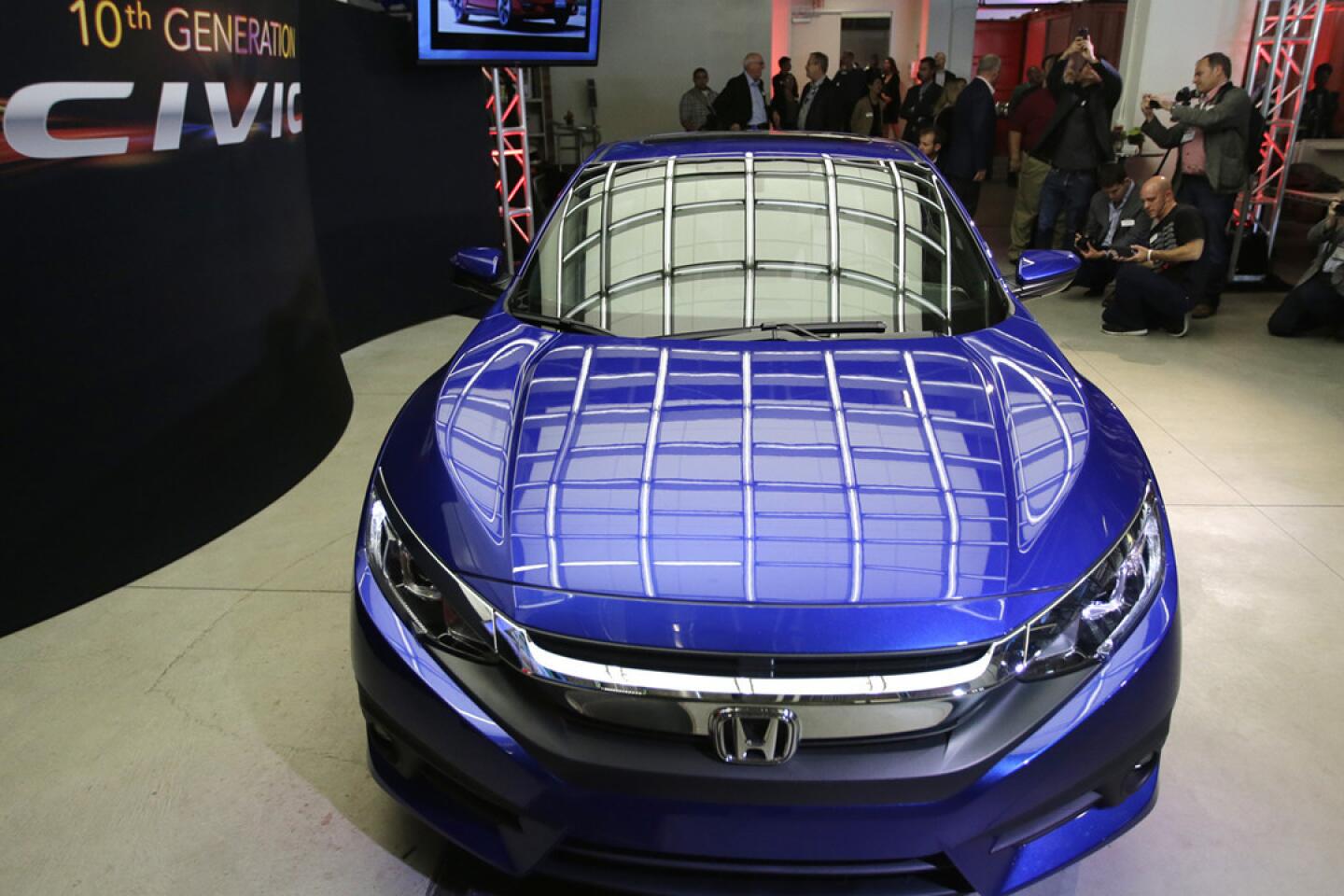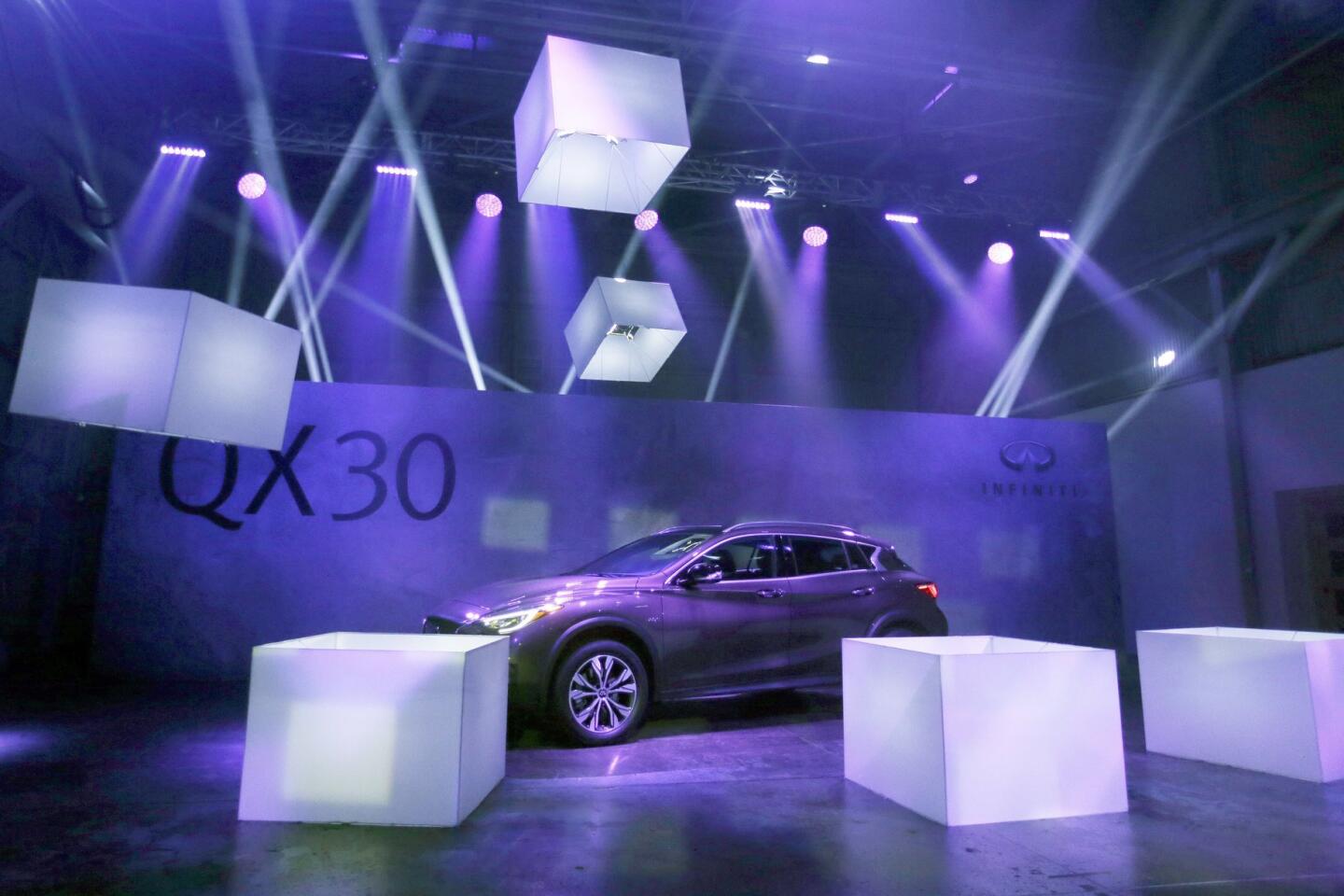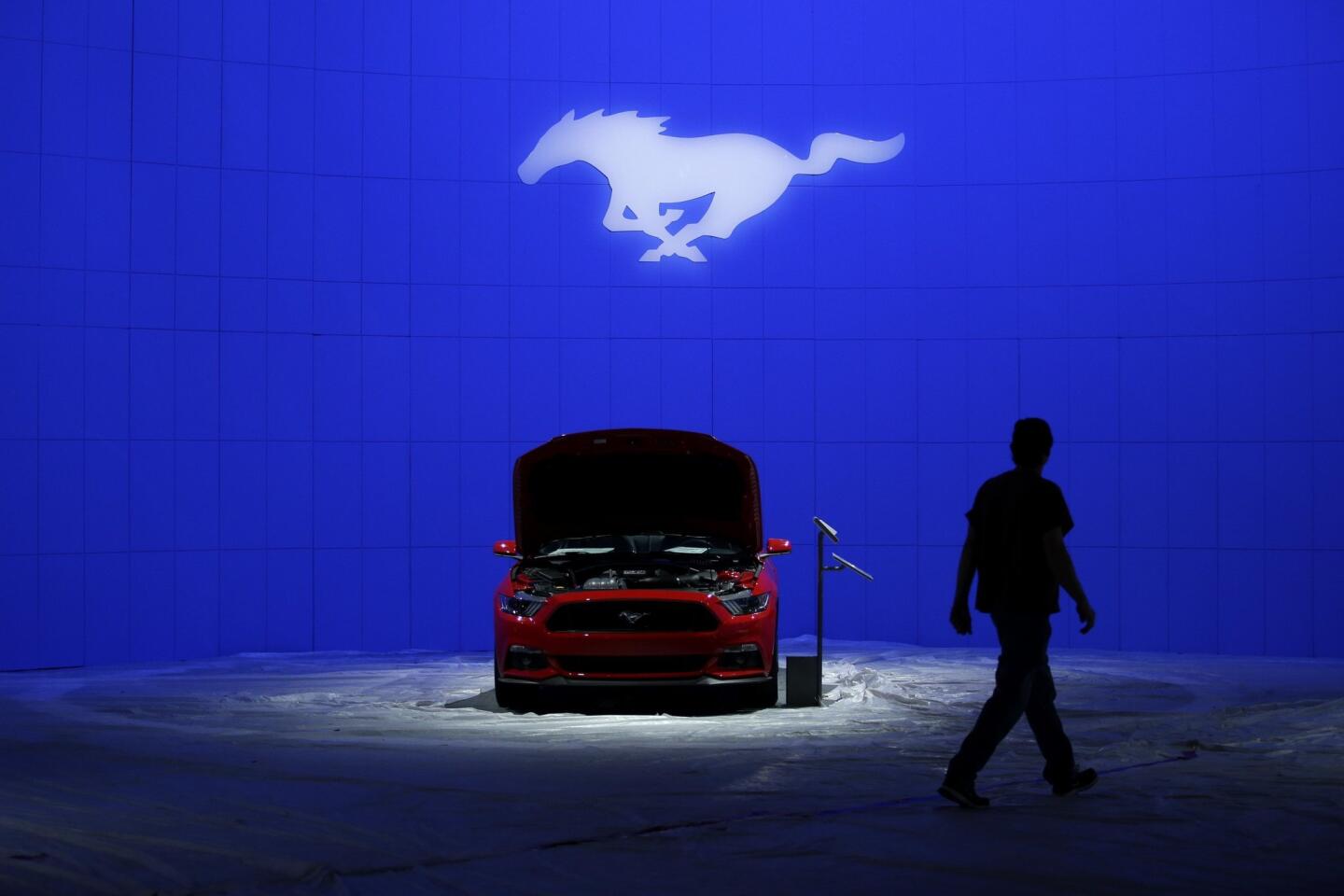California emissions rules charge debate over all-electric cars vs. hybrids
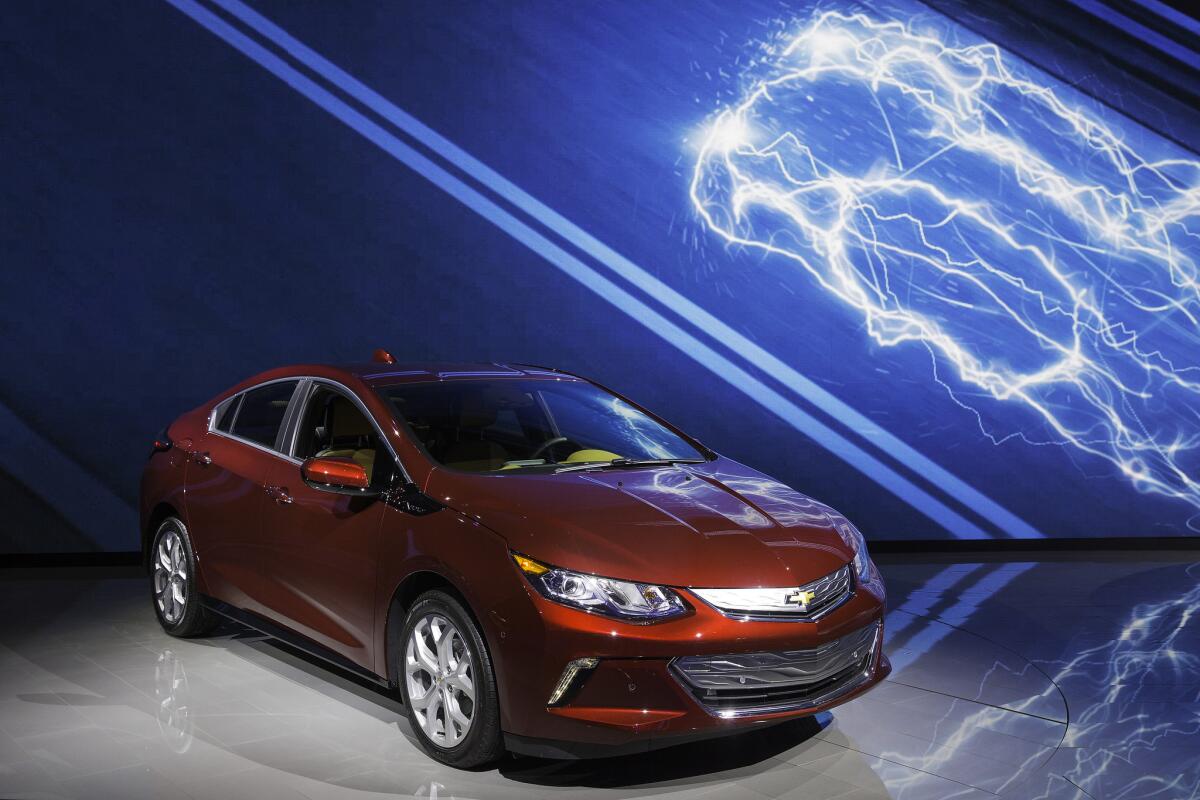
The Chevy Volt was named green car of the year at the Los Angeles Auto Show.
- Share via
As automakers display new plug-in hybrids and electric cars at the Los Angeles Auto Show this week, they are also drawing battle lines in a regulatory fight over California’s ambitious zero-emissions vehicle targets.
Many of the companies argue that regulators should concentrate less on the number of zero-emissions cars on the road and more on the number of zero-emissions miles driven. That can best be achieved, they say, by getting more drivers into plug-in hybrids — which can travel 25 to 50 miles or more on electricity before a gas engine kicks in and extends the range.
Environmental groups and electric car maker Tesla Motors disagree. They want the state to prioritize cars with no gasoline engine at all, such as Tesla’s Model S sedan.
That’s setting up a scrum over so-called zero-emissions environmental credits, which are the main currency of California’s green car regulation. Automakers can either earn the credits by selling green vehicles — or buy them from other automakers, such as Tesla — to comply with Air Resources Board mandates.
The more internal combustion engine cars an auto company sells in California, the more credits it must submit to the state.
Tesla wants the requirements on traditional automakers ramped up. Giving those carmakers more credits for plug-in hybrids, the company argues, represents a lower standard.
Regulators have already given the traditional companies too many breaks, said Diarmuid O’Connell, Tesla’s vice president of business development. And that means the state is far behind at meeting its goals in reducing tailpipe pollution.
“What we need on the road is more zero-emission vehicles, and in mass quantities,” O’Connell said. “With the exception of Tesla, Nissan and perhaps BMW, most manufacturers are only putting the minimum numbers they need into the market to meet the regulations.”
If car companies produce electric vehicles at about their current rate, there are enough credits either already banked or in the pipeline for the industry to meet its requirements through 2022, according to Tesla’s analysis.
And that will leave California hundreds of thousands of vehicles short of its 2025 target of 1.5 million vehicles, he said.
Simon Mui, the automotive expert at the Natural Resources Defense Council, and even Mary Nichols, the chair of the California Air Resources Board, agreed that the ZEV mandate won’t get automakers to meet state goals.
Mui noted that the entire industry, including Tesla, has played the credit inflation game.
Tesla, for example, tried to get more credits awarded for its electric car after demonstrating that it could swap batteries quickly to extend the range of its vehicles. But critics said the seldom-used swapping technology didn’t warrant the extra credits. The Air Resources Board has tightened the rules, Nichols said.
Elsewhere, automakers have tried to get more credits by putting rechargeable cars into car-sharing programs and asking for bonuses for plug-in hybrids that have greater ranges in electric driving mode.
Mui likened the problem of a glut of credits to a giant bathtub overflowing because it has too many faucets.
“You have to turn off the spigot,” Mui said.
Mui said regulators should tighten rules allowing automakers to earn credits.
“One simple way to do this is to adjust the credits downward for all vehicles,” Mui said. “You could also adjust credits for different technologies to try to make it more performance-based. What it will do is [confer an advantage to] some automaker technologies versus others.”
Video reviews, tours and more from the 2015 L.A. Auto Show

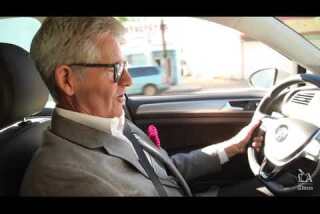
Charles Fleming takes a short drive in VW's electric car -- the e-Golf
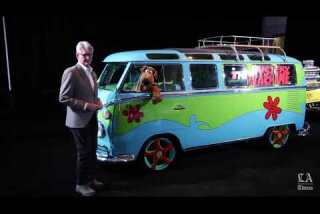
Galpin's Hall of Customs
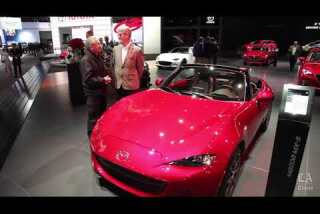
Mazda Miata designer Tom Matano
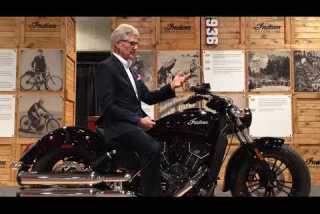
Indian Scout Sixty
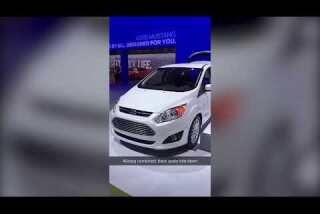
L.A. Auto Show on Snapchat
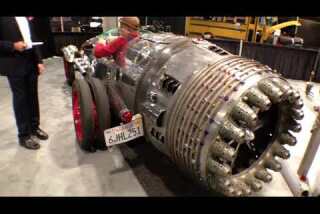
Baron Margo's rolling sculptures
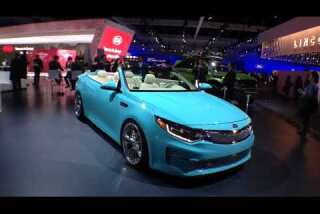
Kia A1A Optima
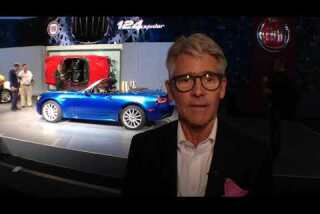
Fiat 124 Spider
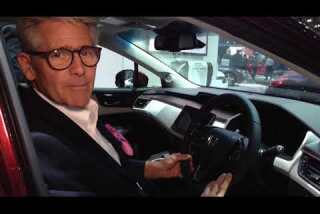
Honda Clarity
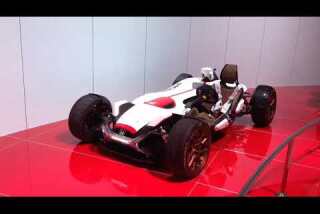
Honda Project 2&4
Tesla wants the Air Resources Board to quadruple its credit requirements. The Palo Alto-based automaker, which generates lots of credits because it sells only electric cars, has so far sold about $600 million in credits to other automakers. But what was once a critical source of revenue for the company has become less important as revenue from vehicle sales has grown, O’Connell said.
Honda, General Motors and others have asked the board to adopt rules that will put more plug-in hybrids on the road.
These hybrids are coming out with longer electric ranges. The second-generation Chevrolet Volt is just going on sale now and can travel 53 miles on one charge before the gas engine kicks in. That’s almost as much as the original electric Nissan Leaf.
Robert Bienenfeld, Assistant Vice President of Environment and
Energy Strategy for American Honda Motor Co., quoted a common saying from a peer in summing up the relative impact of the different technologies: “It may be better to have two plug-in hybrids in the market than one pure battery electric vehicle,” he said.
Bienenfeld was quoting Daniel Sperling, a professor and founding Director of the Institute of Transportation Studies at the University of California, Davis.
Automakers are already moving in that direction. Plug-in hybrids making their North American debuts at the Los Angles Auto Show this week include the BMW 330e, which can go 25 miles on its electric charge before switching to gas power. Cadillac showed a cutaway of a CT6 plug-in, which will have an electric range of about 30 miles.
The BMW 330e, which goes on sale in the U.S. early next year, looks to be a pretty standard BMW sports sedan. It reaches 60 mph in about six seconds and has a top speed of 140 mph. What’s different is a hybrid drive system that allows the car to travel more than 25 miles on electricity alone. After the juice runs out, it still is expected to get better fuel economy than its conventional gasoline counterpart.
It can be recharged in a little more than three hours using a wall socket, and an hour less with a higher voltage charging station.
One mode allows the driver to hold back energy in the battery — and even increase it using the gas engine as a generator while the car is in operation. The stored energy can then be used for pure-electric driving where it saves the most fuel, such as traveling through city streets with lots of traffic lights.
Promoting plug-in hybrids makes sense to Daniel Sperling, a member of the Air Resources Board and director of the Institute of Transportation Studies at UC Davis.
“You can get as many electric miles [with a plug-in hybrid] as you would with any of the electric cars, and at least in the near term, with less cost,” he said. “And consumers would be more willing to buy them.”
The system of credits and regulations is only one way to get more drivers into lower-polluting vehicles, Nichols said. Other initiatives are important, too, including California’s clean vehicle rebate program, car pool lane privileges and more aggressive efforts by utilities to roll out workplace and public charging stations.
Improving the charging infrastructure is critical, she said.
A move in that direction was announced at the auto show Thursday. Five companies — BMW, Nissan, CarCharging/Blink, ChargePoint and NRG Evgo — said they have created an association that will allow drivers to use all of the members’ charging networks, a move that makes electric vehicles easier to use.
Regardless of the regulations, Audi is planning significant growth in electric cars over the next 10 years.
It showed off the electric e-tron quattro crossover concept at the auto show, a vehicle with an expected 250-mile range that it plans to start selling in 2018.
The electric vehicle market has lagged because too many automakers have focused on producing “compliance” cars that meet the Air Resources Board rules for generating credits but aren’t great driving experiences, said Scott Keogh, president of Audi of America.
Like Tesla with its new Model X, Audi is tapping into the popular luxury crossover market, but expects to have a price well below Tesla, he said.
Audi also plans a second all-electric model and forecasts that about a quarter of its sales by 2025 will be EVs or plug-in hybrids.
“Our plans aren’t to make compliance cars,” Keogh said. “We want to make desire cars.”
FOR THE RECORD: A previous version of this story misstated the title of Honda’s Robert Bienenfeld and incorrectly attributed a quote to him. Bienenfeld was referring to a common saying of a peer, Daniel Sperling, a professor and founding Director of the Institute of Transportation Studies at the University of California, Davis.
MORE ON L.A. AUTO SHOW
Airstream is ‘crushing it’ in sales, CEO says
Our favorite cars at the 2015 L.A. Auto Show
Cadillac’s new luxury SUV, the XT5, is a Lexus RX fighter
